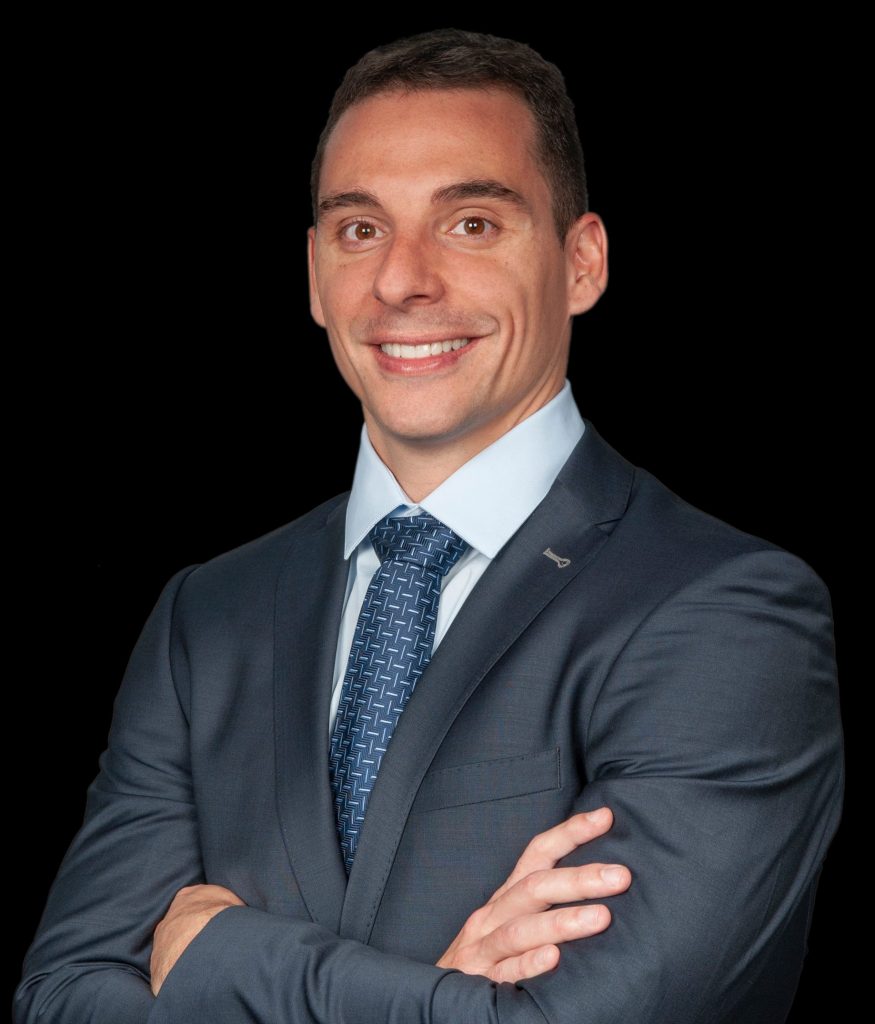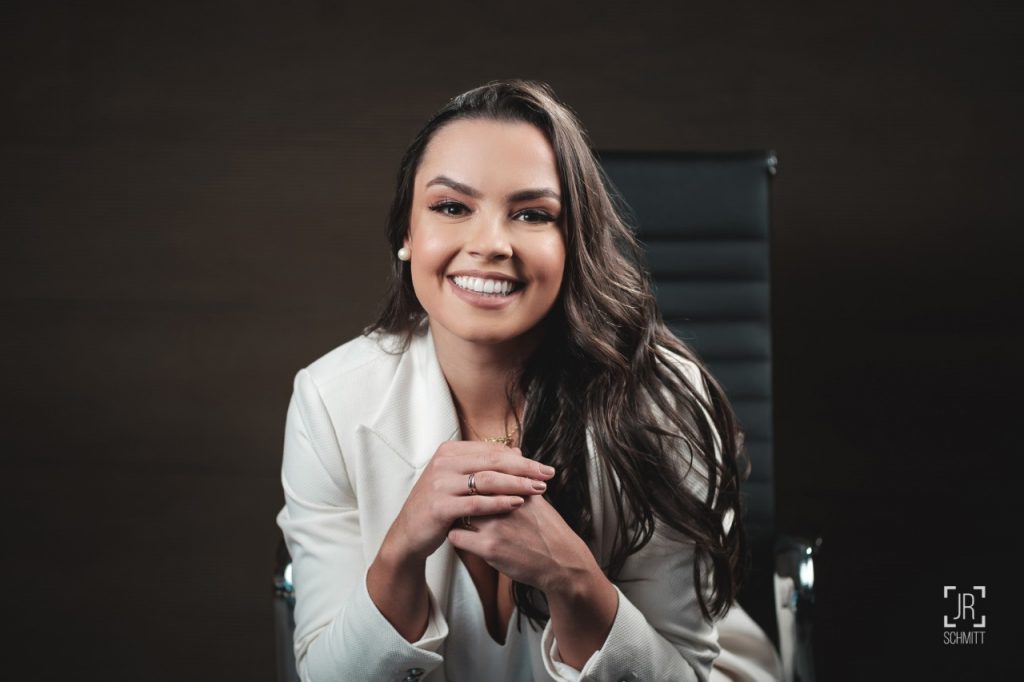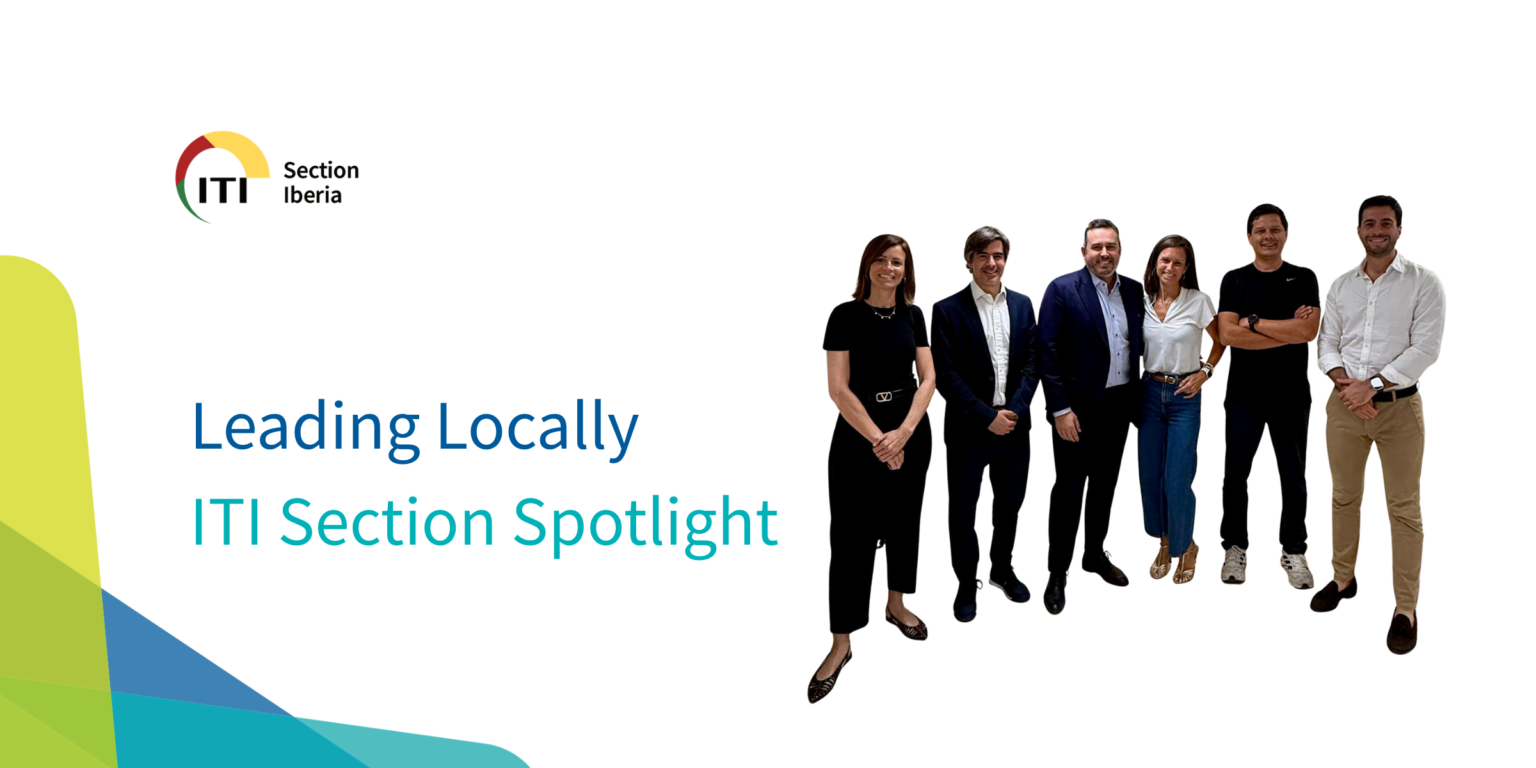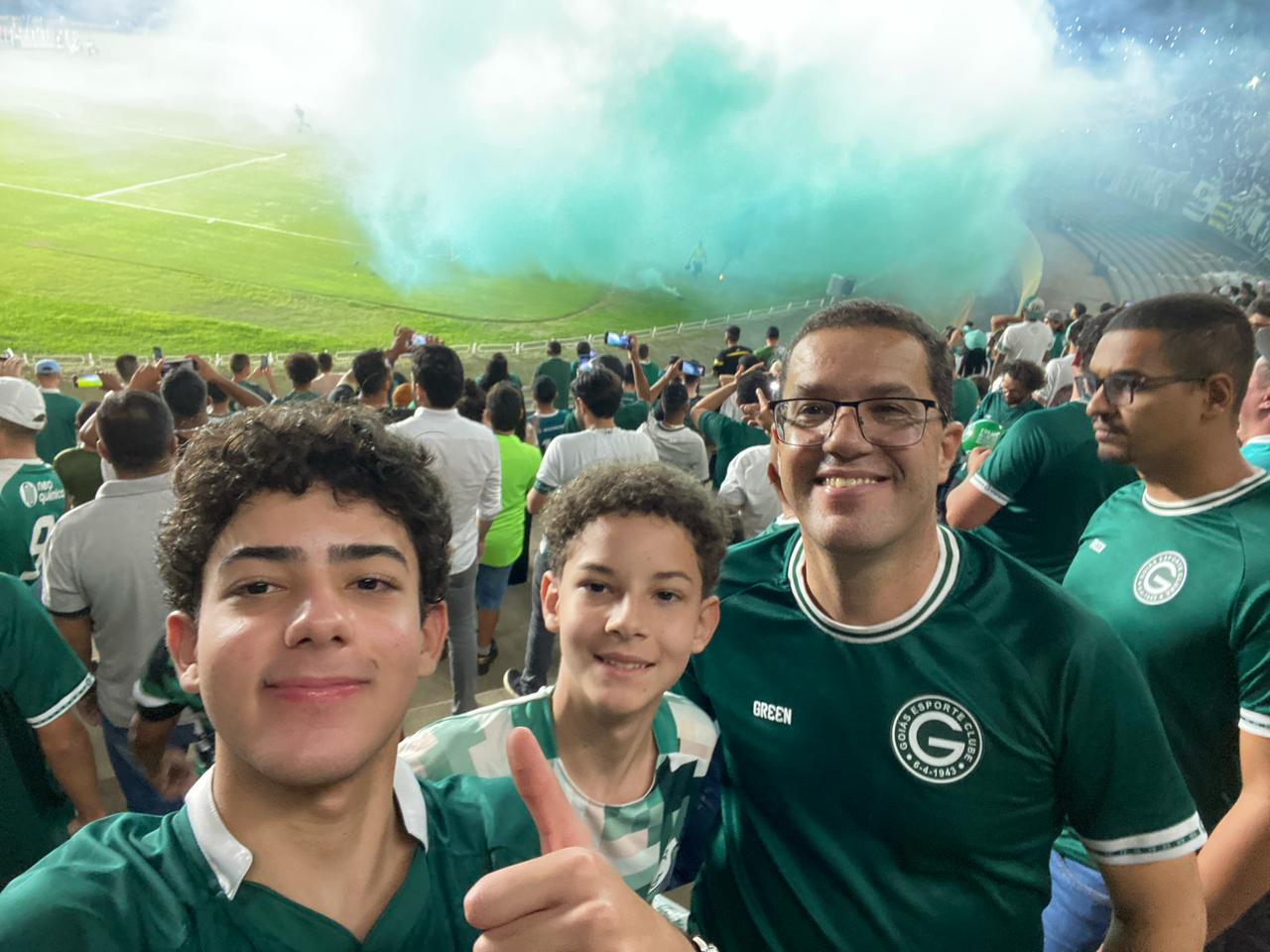“Evidence-based treatment concepts for the rehabilitation of fully and partially edentulous patients” was the title of the 20th ITI Education Week in Bern in August 2023. 45 participants from 17 countries took part in this 4-day event with 7 live surgeries and 1 live prosthetics session as well as lectures covering CAIS, GBR in posterior sites, standard implant placement, SFE lateral window, chairside implant provisionals, GBR in esthetic sites, peri-implantitis and soft tissue augmentation.
Dr. Gabriela Sabatini and Dr. Emilio Couso-Queiruga report on their experience during this week.
Day 1 started with a warm welcome from ITI President Dr. Charlotte Stilwell and an overview of the history and goals of the ITI, emphasizing evidence-based implant dentistry and its philosophy in clinical practice. Professor Vivianne Chappuis then took over and explained the development of dental implants over time and their effectiveness in the long-term, discussing the effect of micro and macro features of implant fixtures, biological, mechanical, and esthetic complications that can be encountered in implant therapy and the objectives we need to keep in mind when are replacing missing teeth with dental implants. She was followed by Professor Martin Schimmel who highlighted the importance of adequate treatment planning/risk assessment from the prosthetic view. The last presentation of the morning was from Professor Anton Sculean who emphasized treatment planning/risk assessment from the periodontal view.
Two live surgeries followed that were carried out by Dr. Clemens Raabe and Professor Giovanni Salvi, respectively. Each was accompanied by live commentary and exchange with the respective surgeon provided by Professors Chappuis and Abou-Ayash, and then Professor Sculean. We really enjoyed excellent interaction between the auditorium and operation room during both surgeries!
After lunch and a group picture, we split into two groups. One group started with a workshop by Doctors Manrique Fonseca and Clemens Raabe where the participants had the opportunity to digitally plan implant cases with the software and get some practice utilizing phantoms. The other group started the afternoon with a lecture from Professor Vivianne Chappuis, who explained the oral-facial anatomy in the maxilla and the mandible related to implant dentistry that must be taken into consideration during the treatment planning and surgical phases. During the presentation, emphasis was placed on the importance of adequate advanced digital assessment using cone beam computed tomography scans in different clinical scenarios.
PD Doctor Valérie Suter emphasized the medical risk factors for implant therapy that need to be considered in daily clinical practice. During her presentation PD Dr. Suter pointed out some systemic health disorders and medications that must be assessed during patient-related evaluation/treatments. Finally, relative risk factors for implant surgery were discussed with several examples involving clinical scenarios in compromised patients.
The last lecture was given by Professor Bosshardt who explained the integration of the peri-implant bone and mucosa around dental implants from a biological point of view. During his presentation, the concepts of osseointegration, primary and secondary stability, the effect of surface modifications and implant materials on osseointegration, and the differences between the anatomy of a tooth and a dental implant were discussed in detail.
Finally, Professor Salvi presented a complex periodontal clinical scenario. This was a really interesting case where the principles of treatment planning and risk assessment discussed in the morning by Professor Sculean were put into clinical practice. Different therapies were shown such as tooth extraction, guided tissue regeneration, the replacement of missing teeth with dental implants, and soft tissue grafting procedures.
The groups switched mid-afternoon so that everyone enjoyed both the workshop and the lectures. The day came to an end with an excellent dinner in the restaurant Casino Bern!
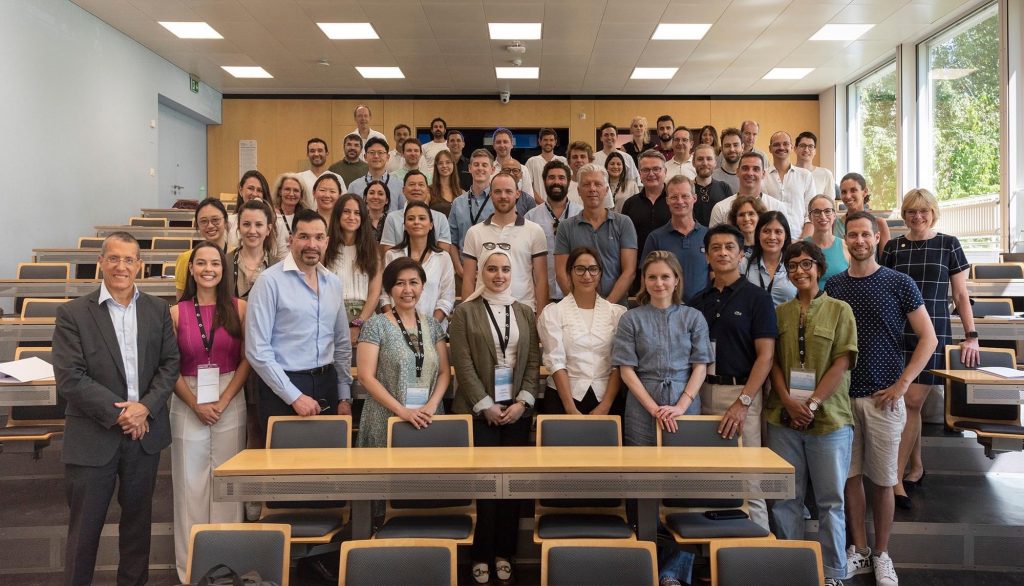
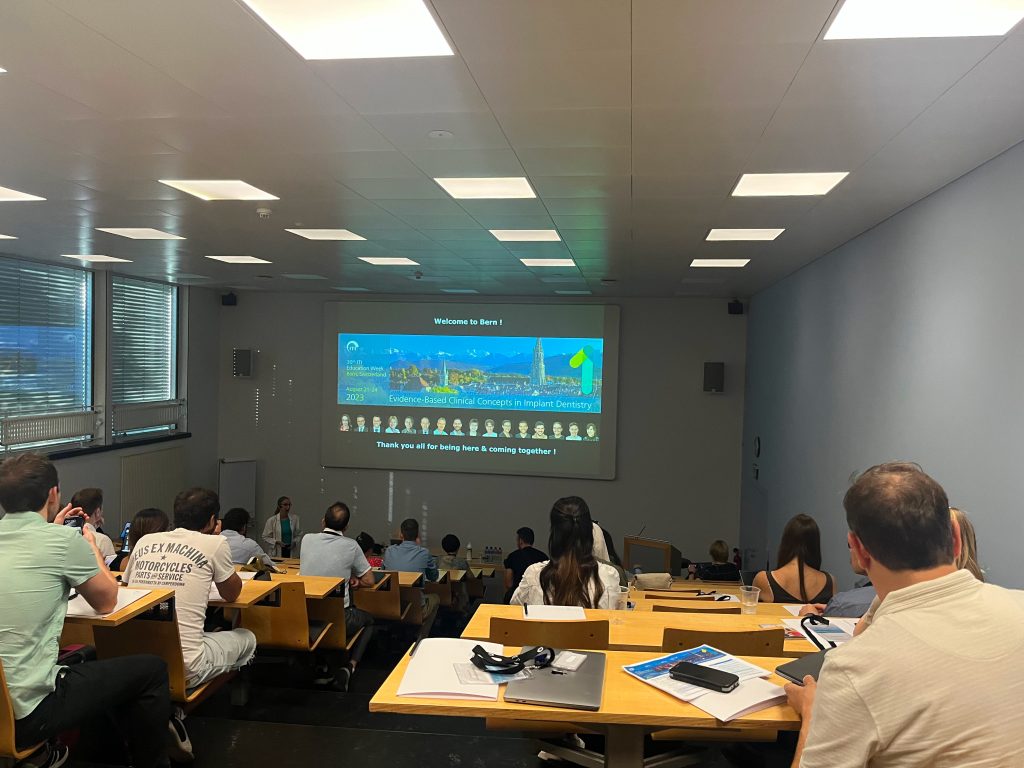
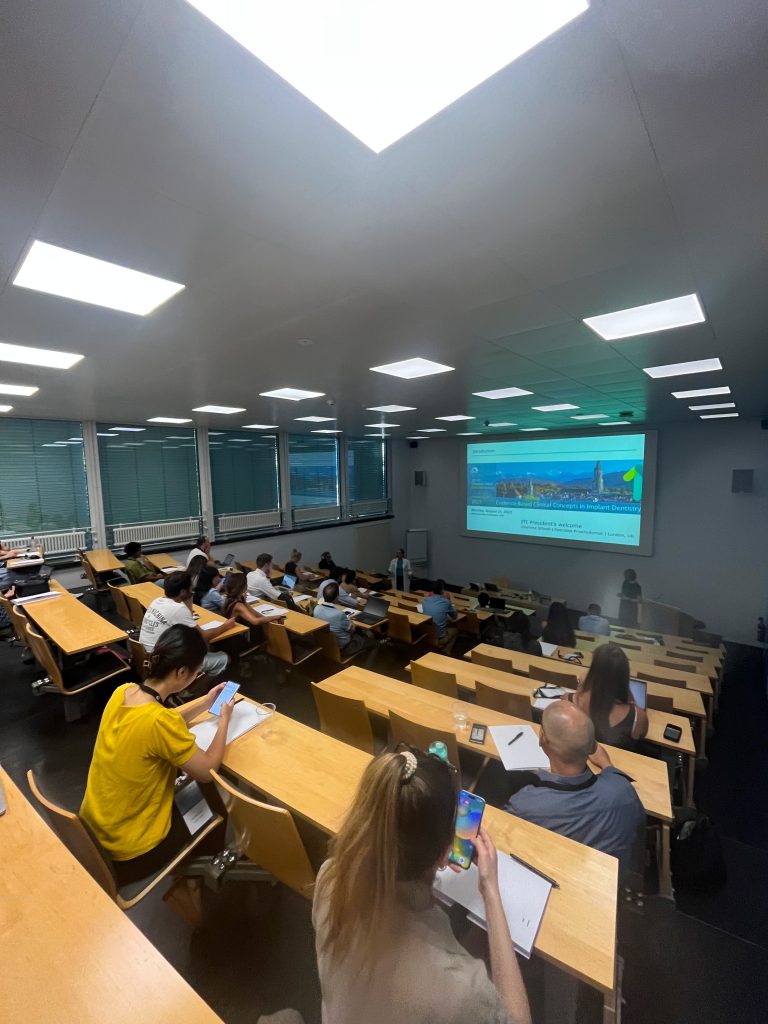
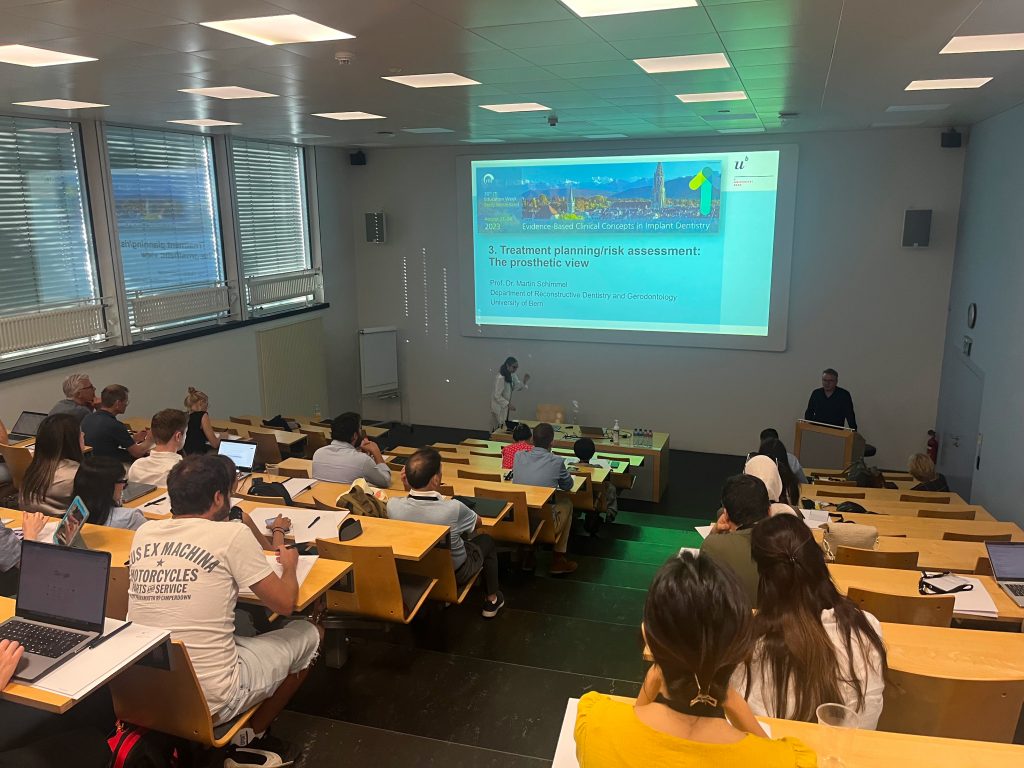
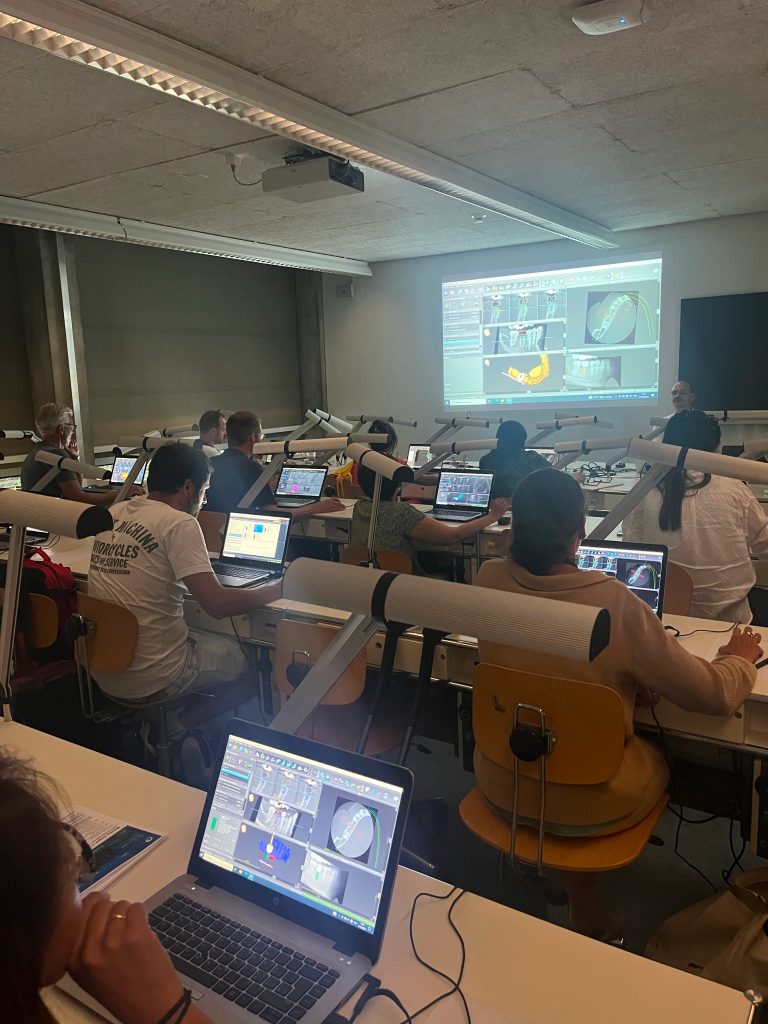
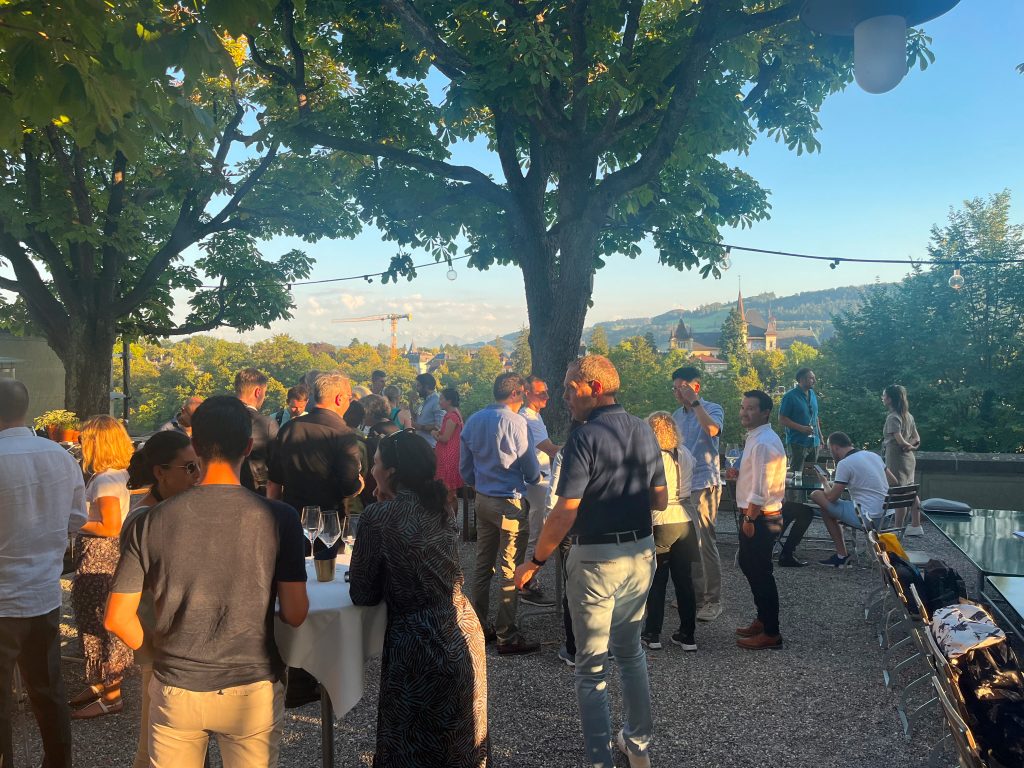
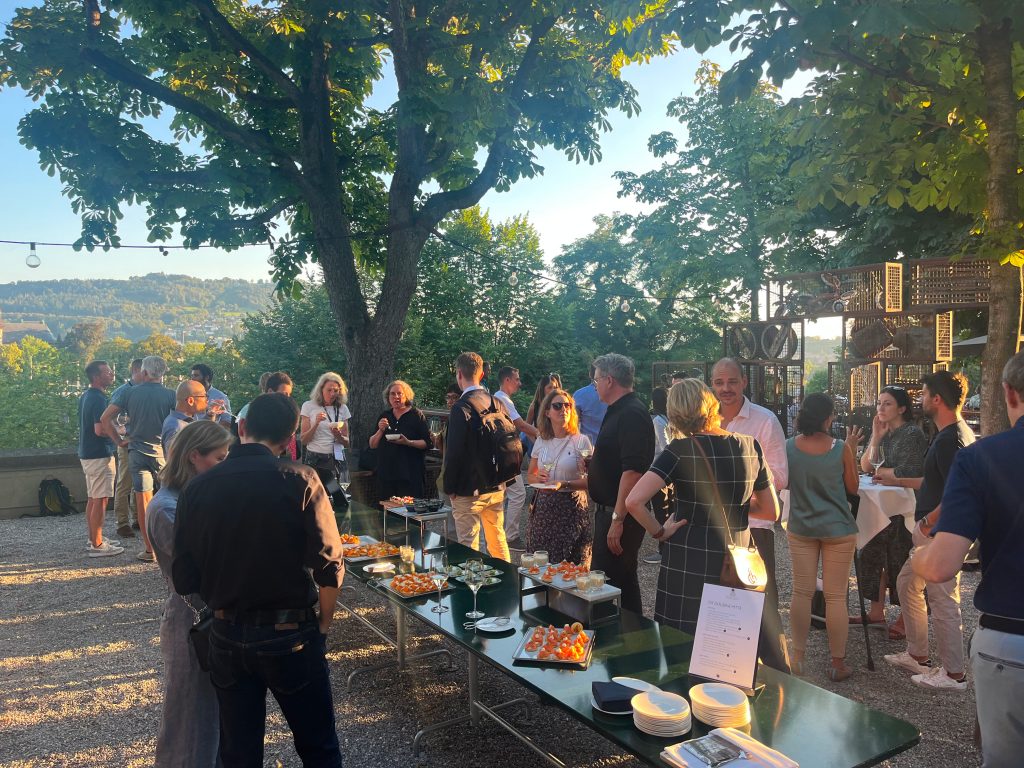
The second day started with a presentation on the fundamentals in guided bone regeneration (GBR) procedures by Professor Vivianne Chappuis. It was a great start and a good warm-up taking into consideration the live surgeries and workshops we had!
After the first talk, Dr. Clemens Raabe started the third live surgery of the ITI Education Week. He discussed the patient’s history, the treatment that had been performed, and the thought process behind the treatment. In this case, early implant placement on site 33 was performed with an additional bone augmentation procedure in line with the principles of GBR. Professor Chappuis was in the auditorium moderating between the participants and Dr. Raabe.
After the break, it was the turn of Professor Chappuis to do the fourth live surgery of the week. We all had the opportunity to observe two implant placements with simultaneous sinus floor elevation procedures via a lateral approach in addition to a horizontal augmentation procedure via GBR. This time it was Dr. Raabe moderating from the auditorium.
After lunch, the participants were divided into two groups. Group A started with an amazing workshop from the surgery team involving phantom models on how to adequately place two implants in esthetic areas with a contour augmentation procedure and sinus floor elevation via transcrestal and lateral approaches. This was great after the live surgeries we had had during the morning, and it was nice to get some practice!
Group B started with the lectures in the auditorium. We enjoyed listening to Professor Martin Schimmel, who gave us an excellent overview of prosthetic concepts in fully edentulous patients. The concepts clarified how to adequately select the type of prosthesis and number of implants depending on the clinical situation!
The second lecture of the afternoon was given by Professor Samir Abou-Ayash. During his presentation, he discussed the parameters we should take into consideration to make adequate clinical decisions in scenarios with a single tooth gap in the anterior esthetic zone, or situations involving two adjacent or multiple missing teeth. It was great to see the treatment alternatives based on the evidence.
Our third speaker was Professor Burak Yilmaz. Professor Yilmaz highlighted prosthetic materials and Ti-base abutments and their effectiveness in fixed prostheses. The advantages and disadvantages also of additive manufacturing technologies were summarized, as well as the influence of different behaviors and clinical scenarios on different materials. What a great lecture for material selection!
The last speaker of the day was PD Doctor Maria Asparuhova. She explained the complex cellular and molecular aspects of bone healing, in vitro studies related to a natural source of growth factors termed bone-conditioned medium (BCM), and the regulation of bone regeneration in human post-extraction tooth sockets. It was really interesting to see the composition, biological activity, mechanism of action, and application for functionalization of biomaterials with the clinical potential in bone augmentation procedures as well as what occurs in post-extraction sockets after 8 weeks of healing.
We then had an excellent workshop with the Perio team, where we had the chance to learn how to properly place a Standard TL implant in a non-esthetic area. Both workshops were excellent and we had a great opportunity to learn from two outstanding departments and faculty from the University of Bern.
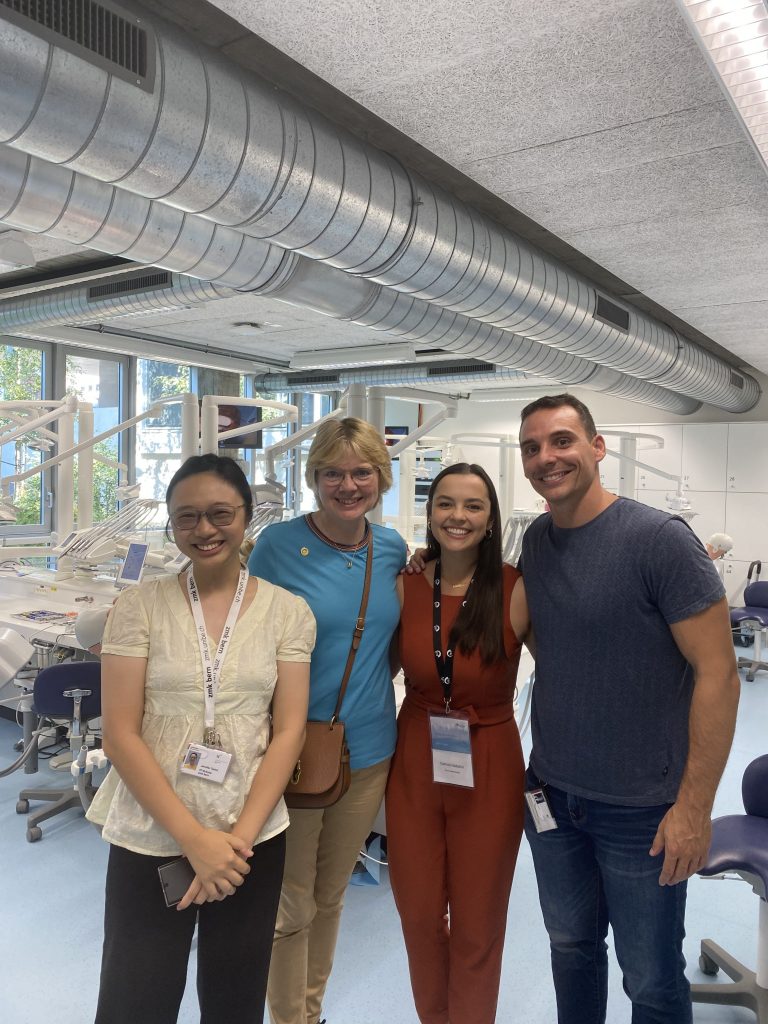
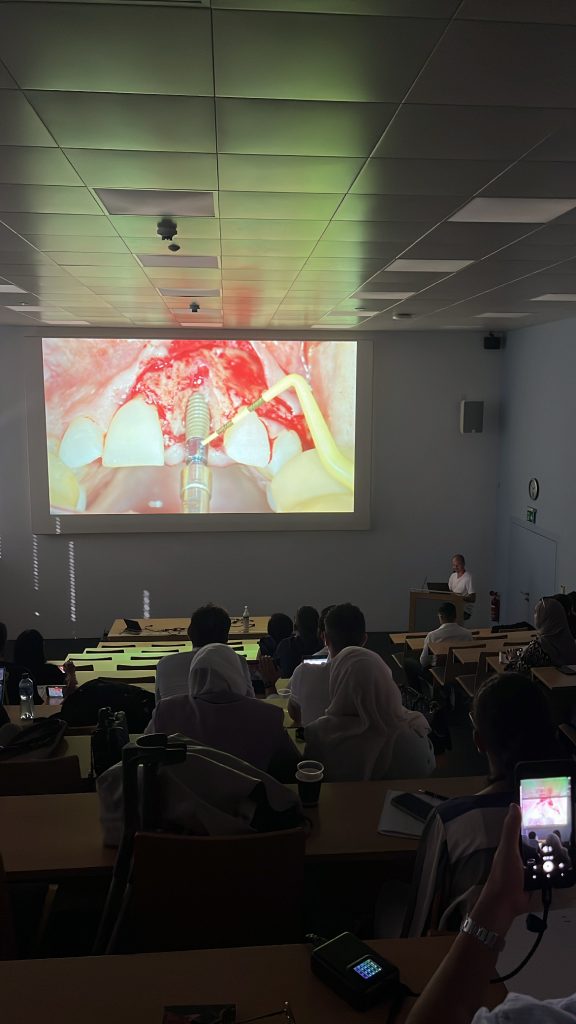
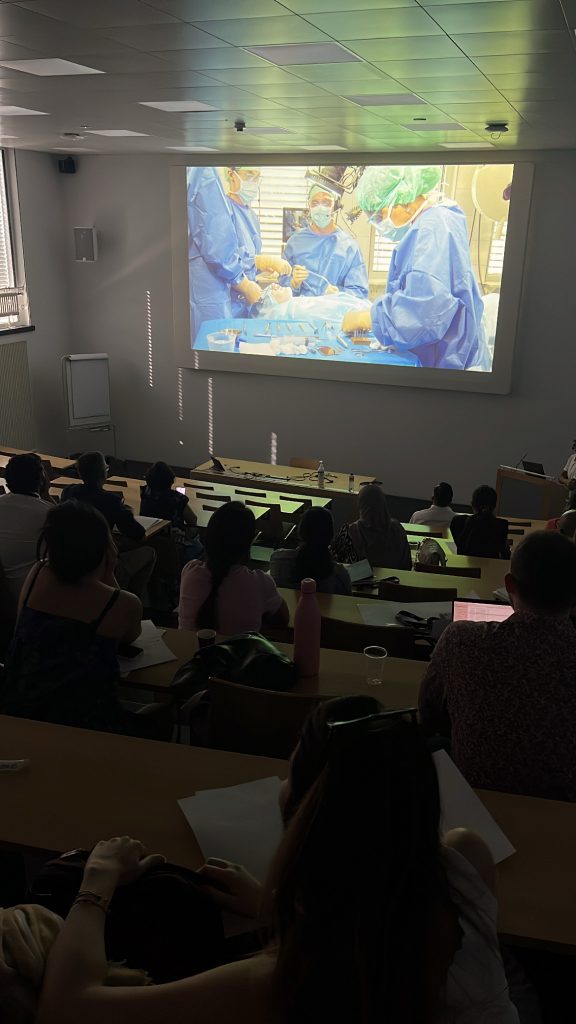
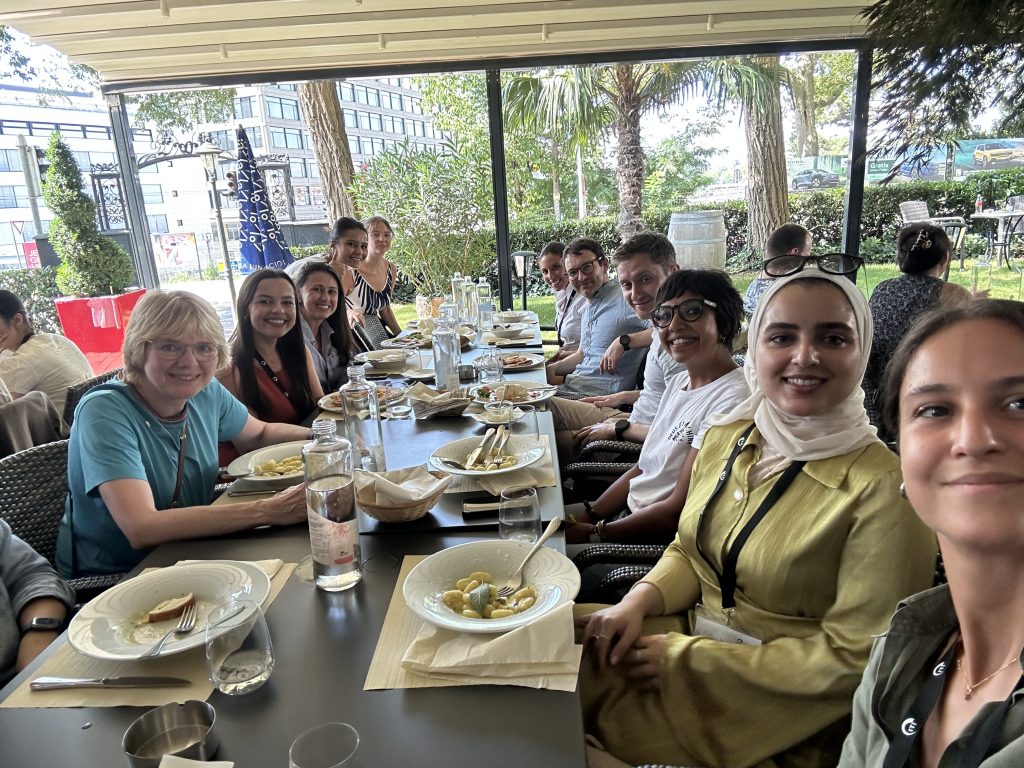
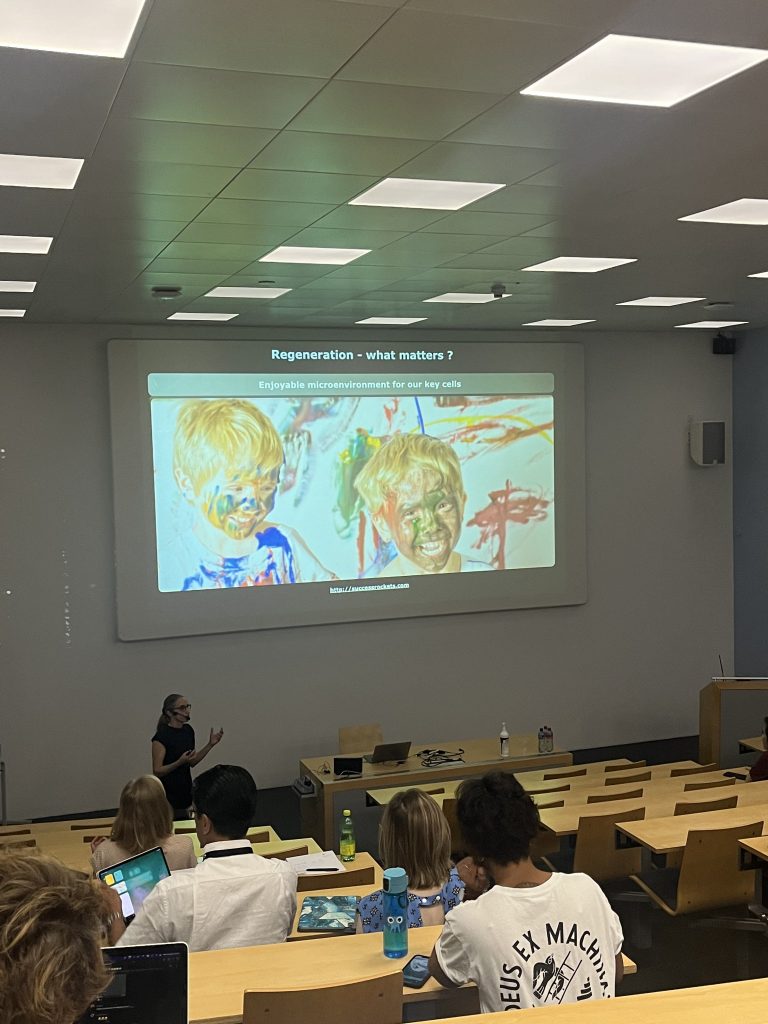
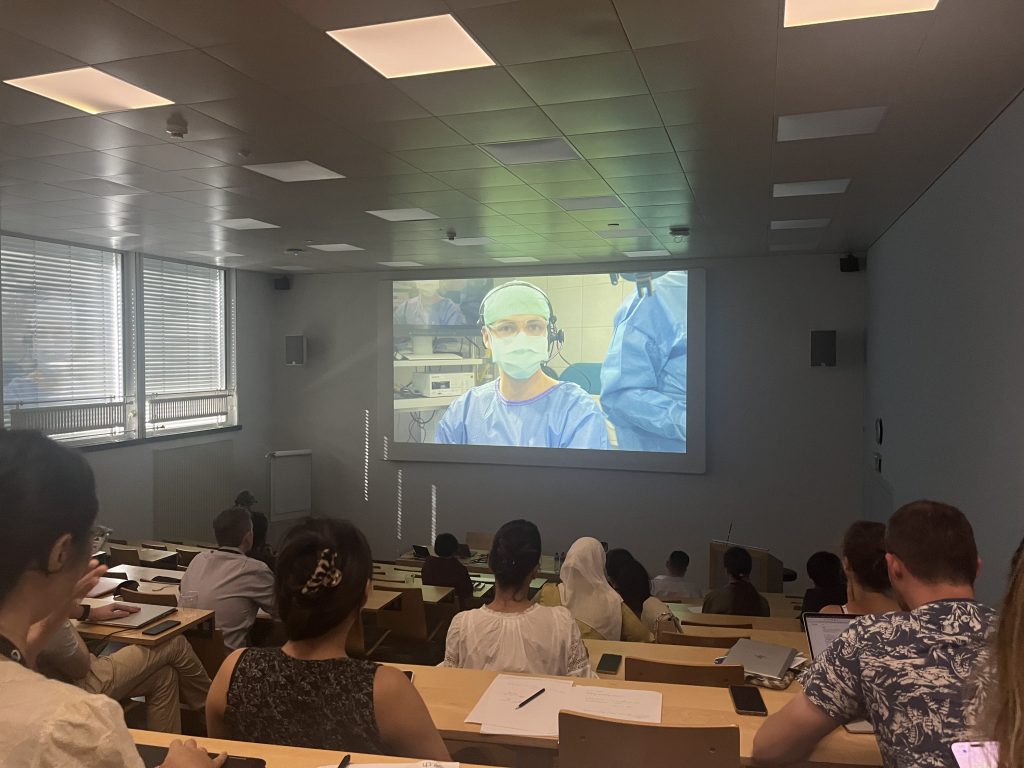
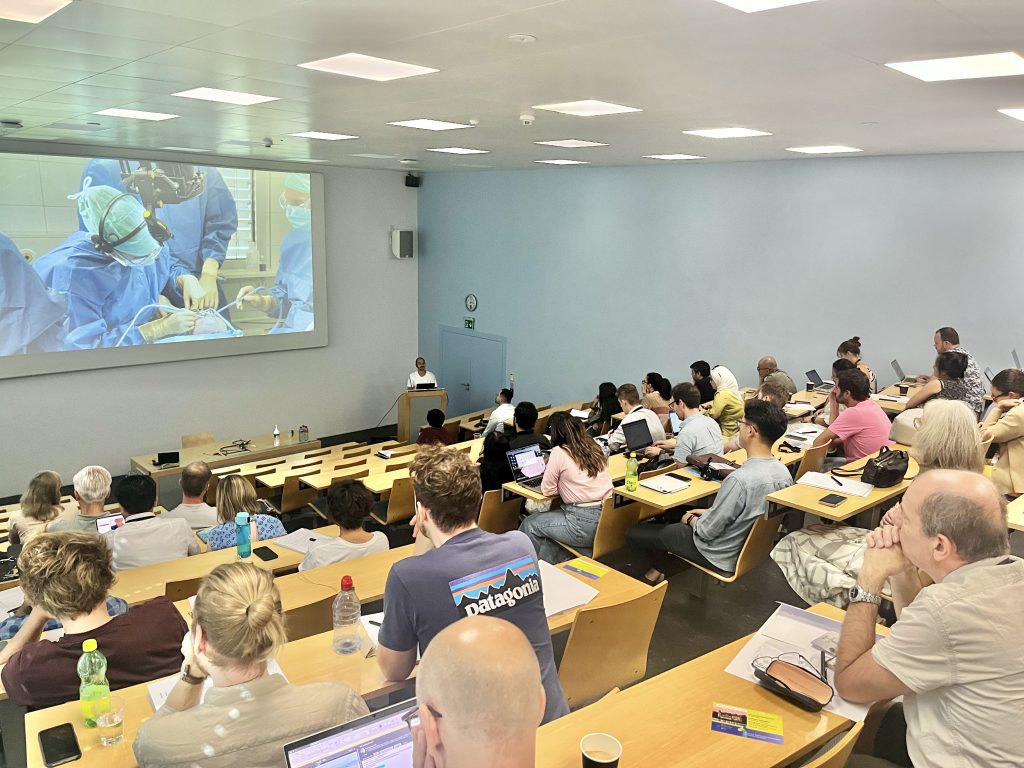
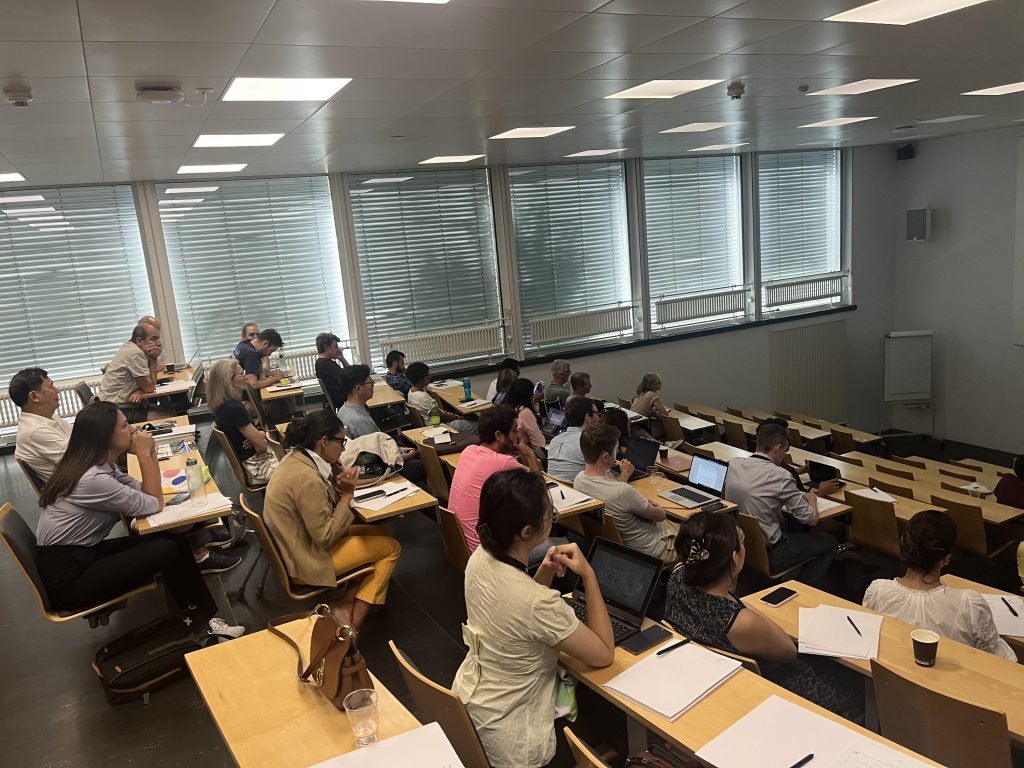
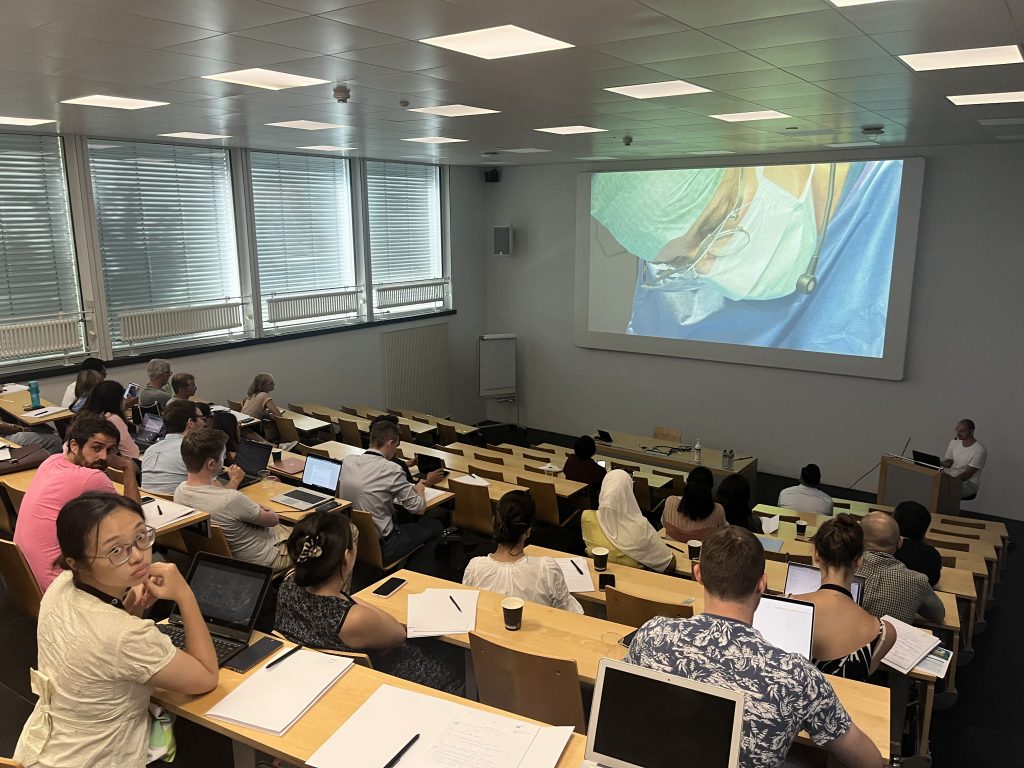
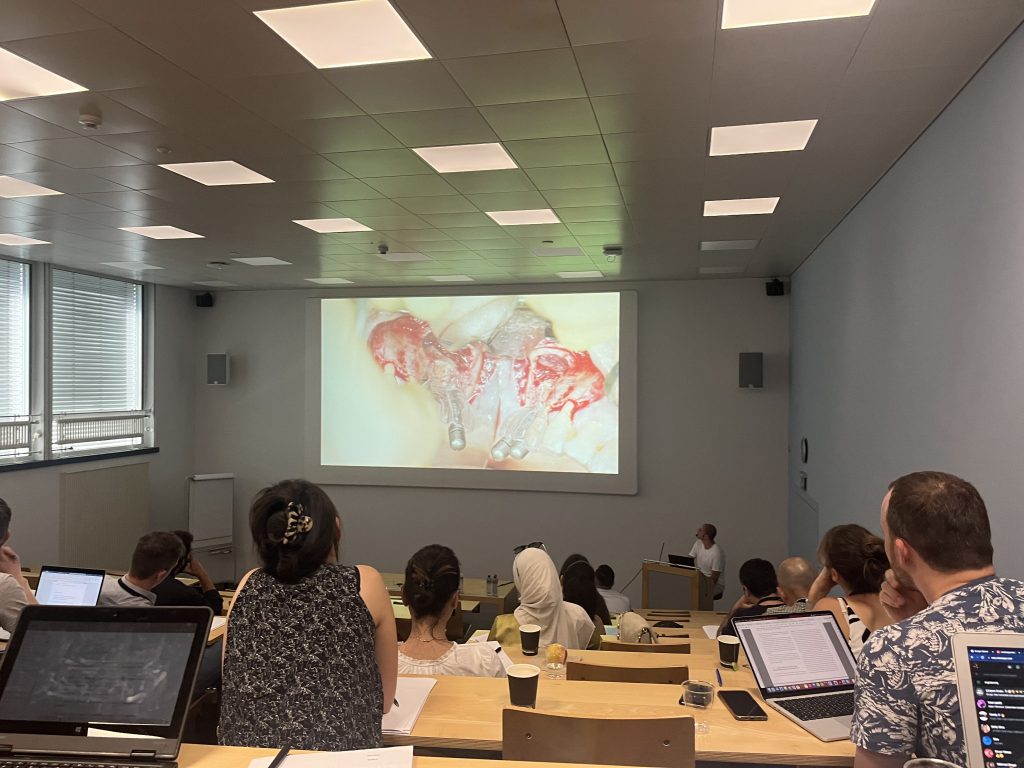
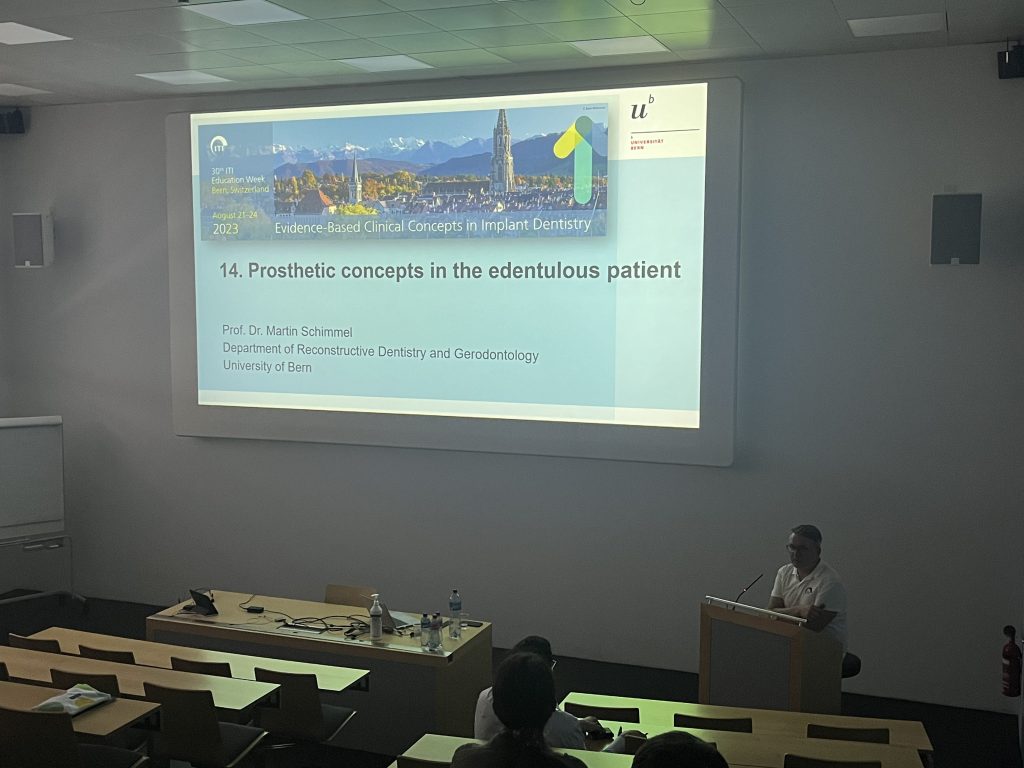
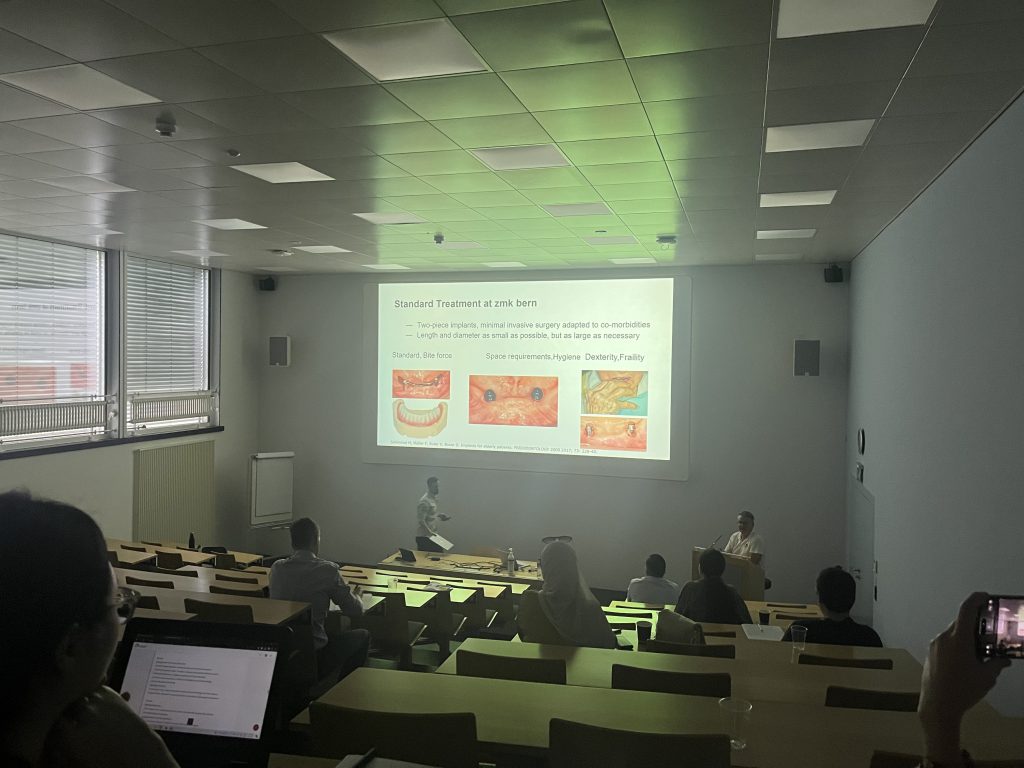
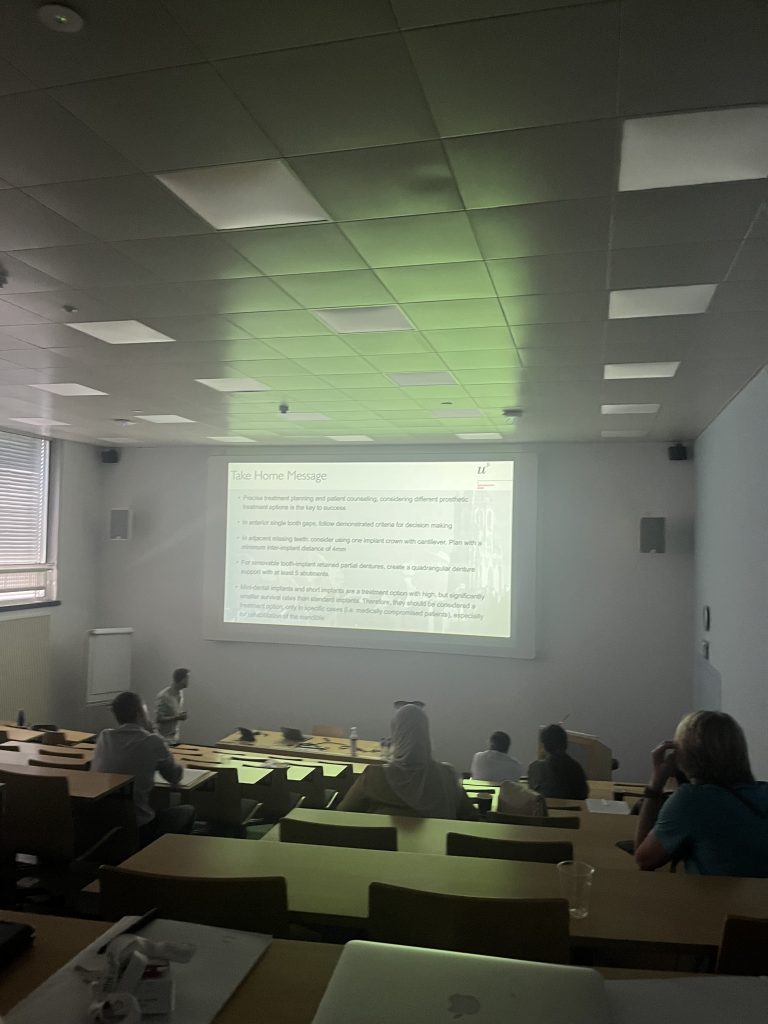

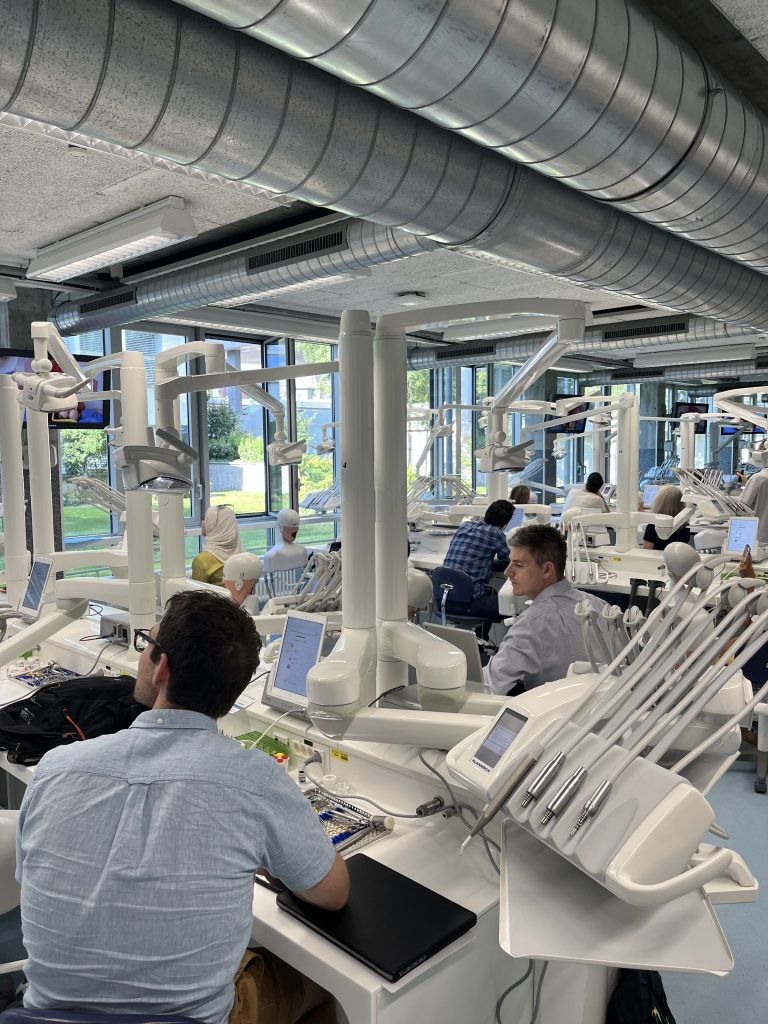
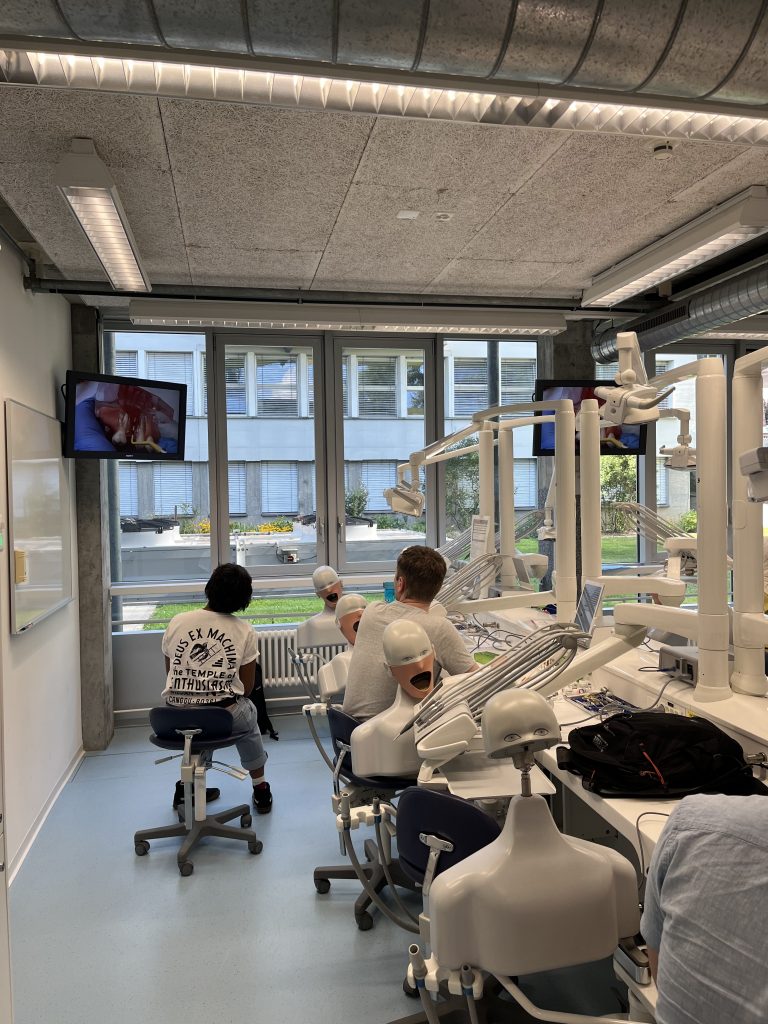
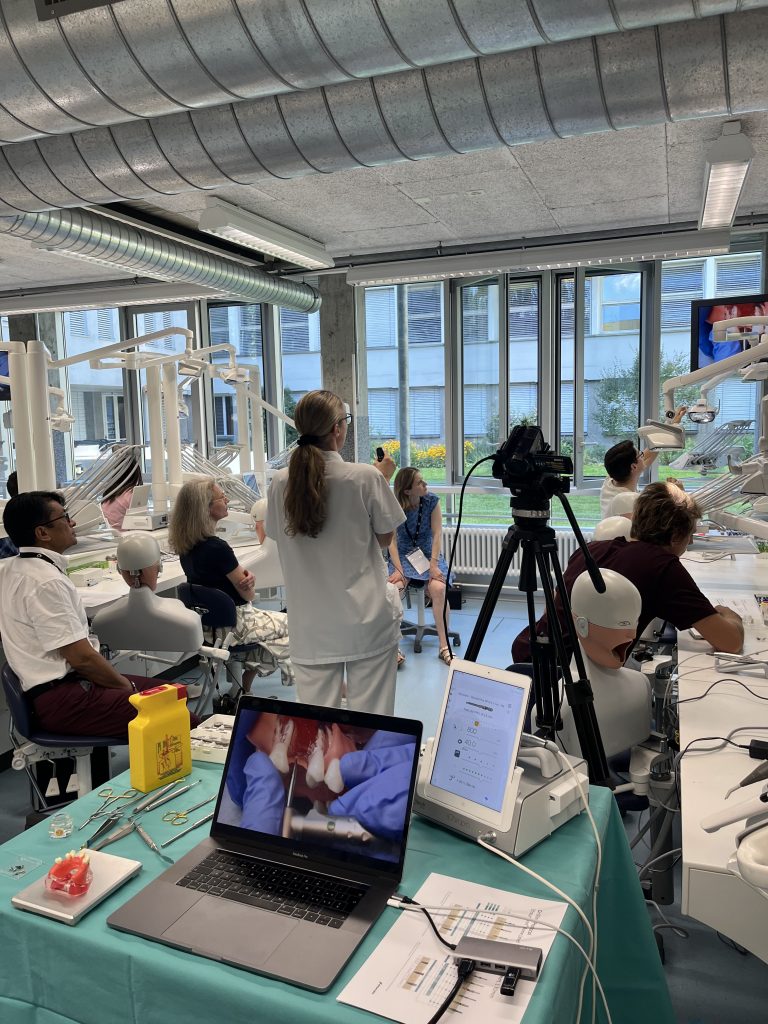
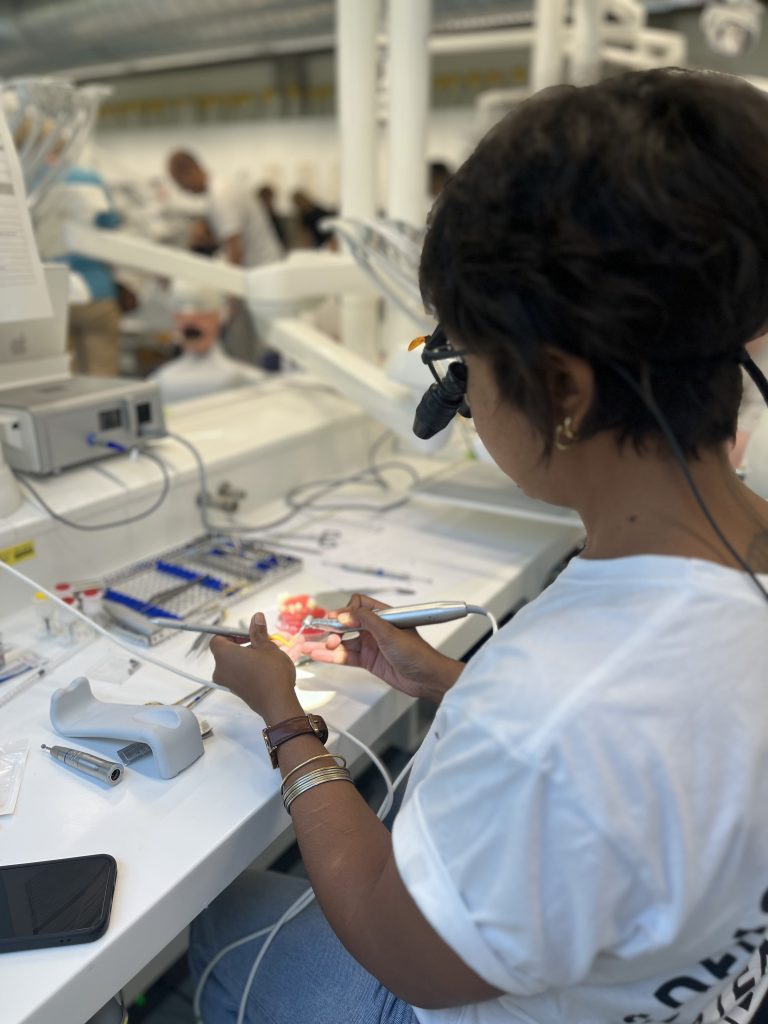
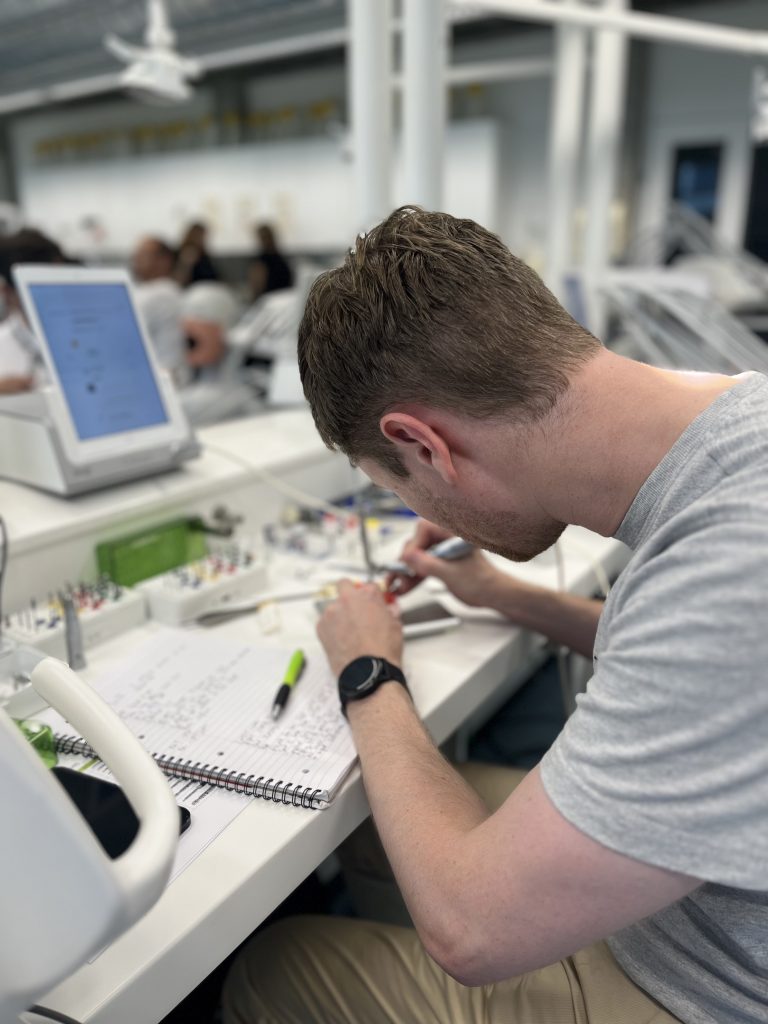
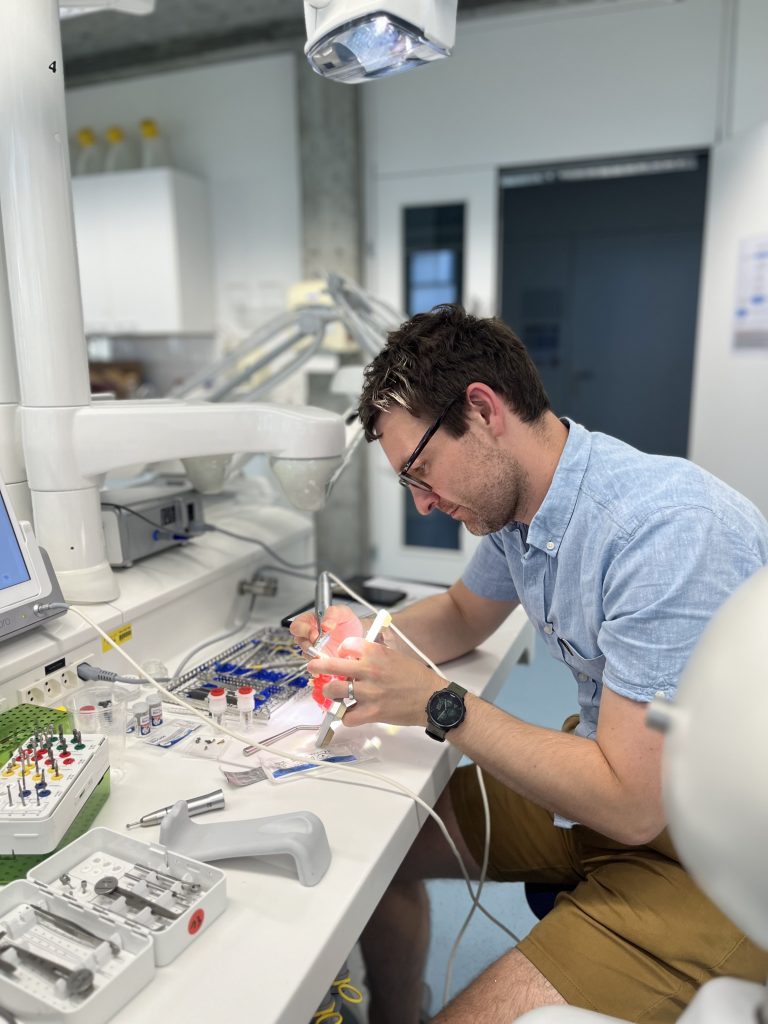
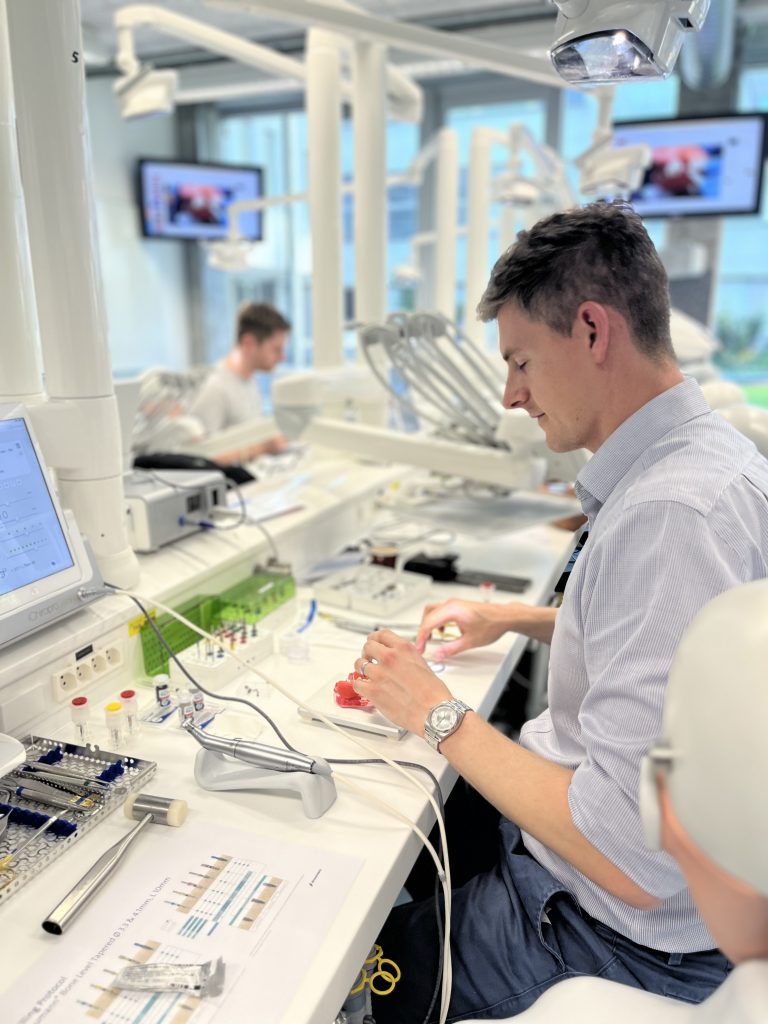

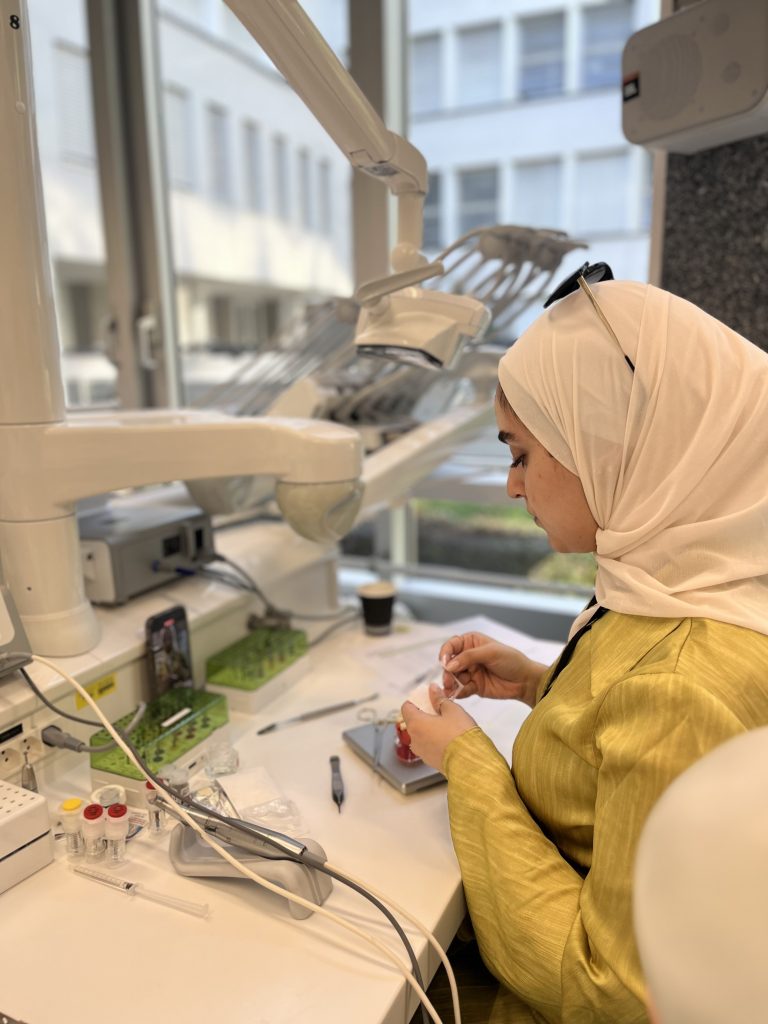
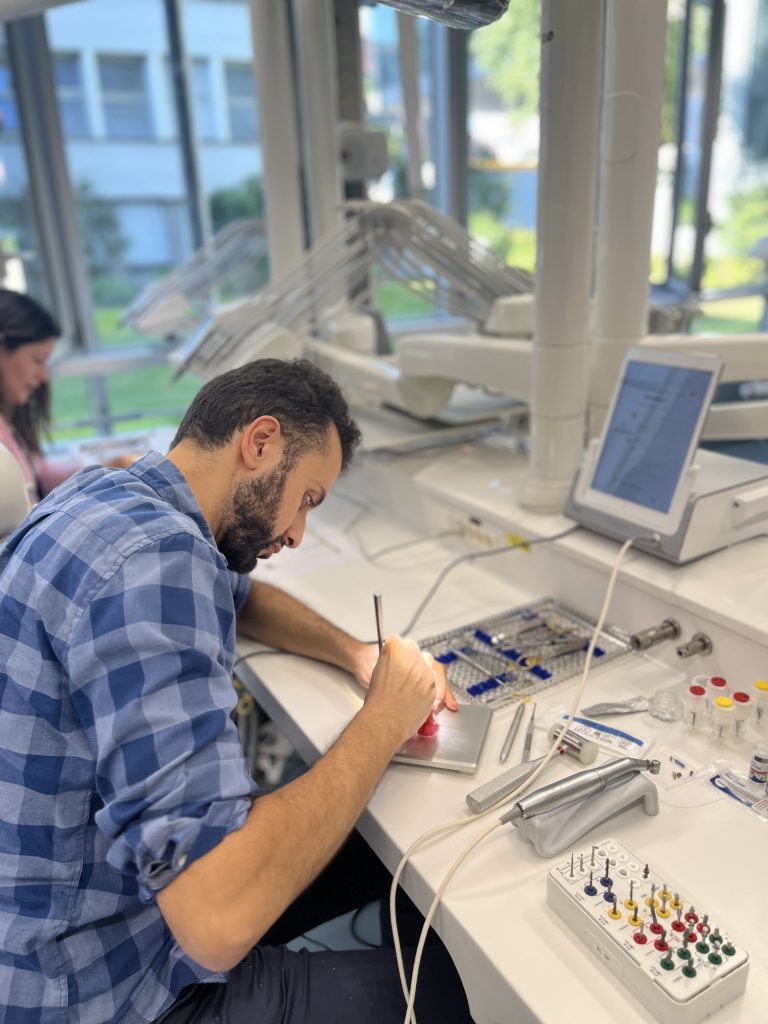
The third day started with a presentation on digital prosthodontics by Professor Abou-Ayash. He discussed the workflow for single implant crowns and the steps we should follow. An amazing presentation to learn the theoretical part and a great warm-up for the live session that followed!
After the first talk, we began with the fifth live surgery of the week. Professor Chappuis performed an early implant placement with a contour augmentation procedure via GBR on site 21. It was great having Professor Chappuis with Dr. Couso in the operation room and Dr. Raabe in the auditorium!
The second live session of the day was led by Professor Abou-Ayash. In this case, he showed us how to fabricate a provisional crown for an implant that was placed in the anterior zone in the dental clinic using the CEREC system.
As on the first two days, we divided into two groups, one of which enjoyed a workshop led by Dr. Ramona Buser, who showed how to clinically perform a direct provisional for dental implants and the impression taking.
Meanwhile, the other group had the chance to learn from Professor Chappuis about the hard and soft tissue alterations that take place after tooth extraction. These concepts were also discussed during the surgery that morning! It was great to see the differences between thin and thick bone wall phenotypes, and how we can anticipate these resorptive events.
Our third lecture was given by Dr. Clemens Raabe, who discussed when a dental implant can be placed. The main goal was to answer the question “Should we place implants in an immediate, early, or late approach? Nice presentation after having clarified the post-extraction dimensional changes that can be expected and the treatment options we have to replace a missing tooth with a dental implant.
The fourth lecture was again by Professor Chappuis. We enjoyed learning when sinus floor augmentation procedures are indicated, what techniques can be performed depending on the alveolar residual bone height, the preoperative analysis that must be done, or how we can avoid the complications that can come up. Again, another great lecture after having seen a sinus floor augmentation procedure and having the hands-on session on the previous day!
The last lecture of the day was given by Dr. Clemens Raabe. It was time to learn about static computer-assisted implant placement. What a great presentation to see how these new technologies can help us in our daily clinical practice but also to keep in mind that implant placements also following a fully guided approach can also lead to some limitations.
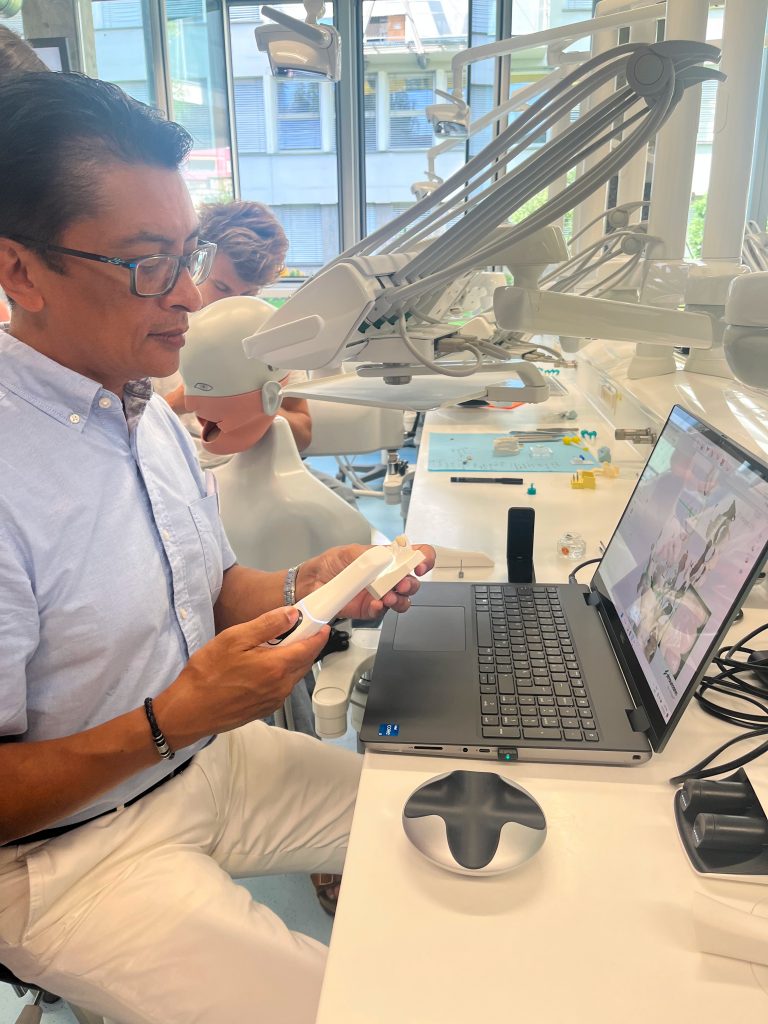
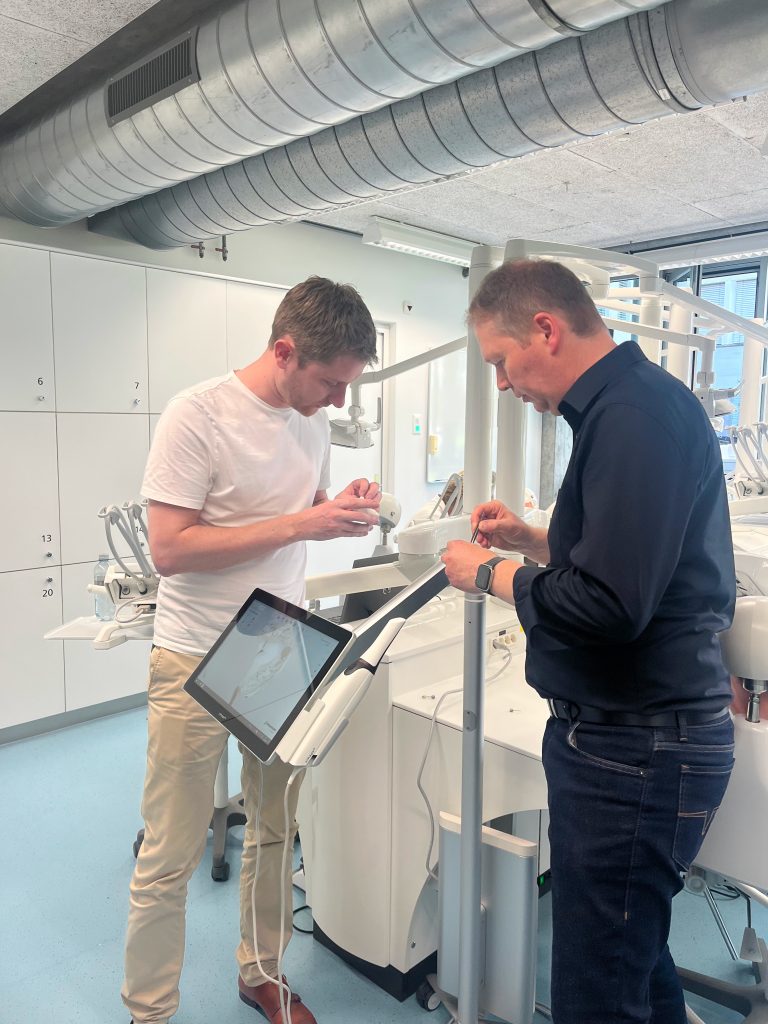
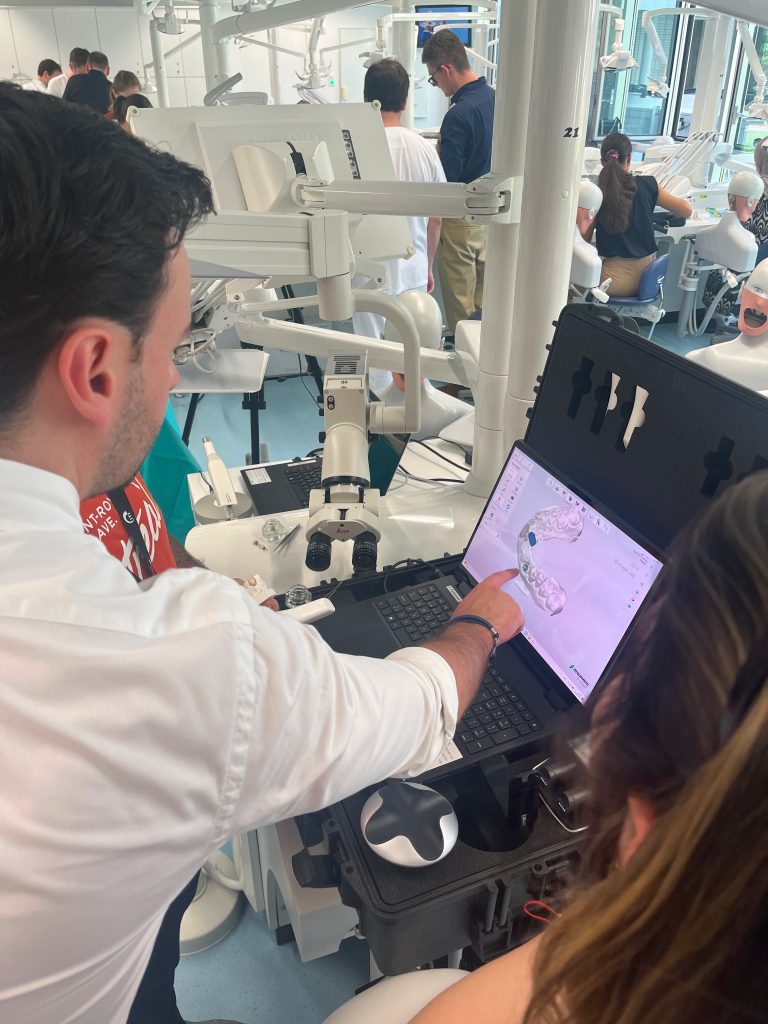

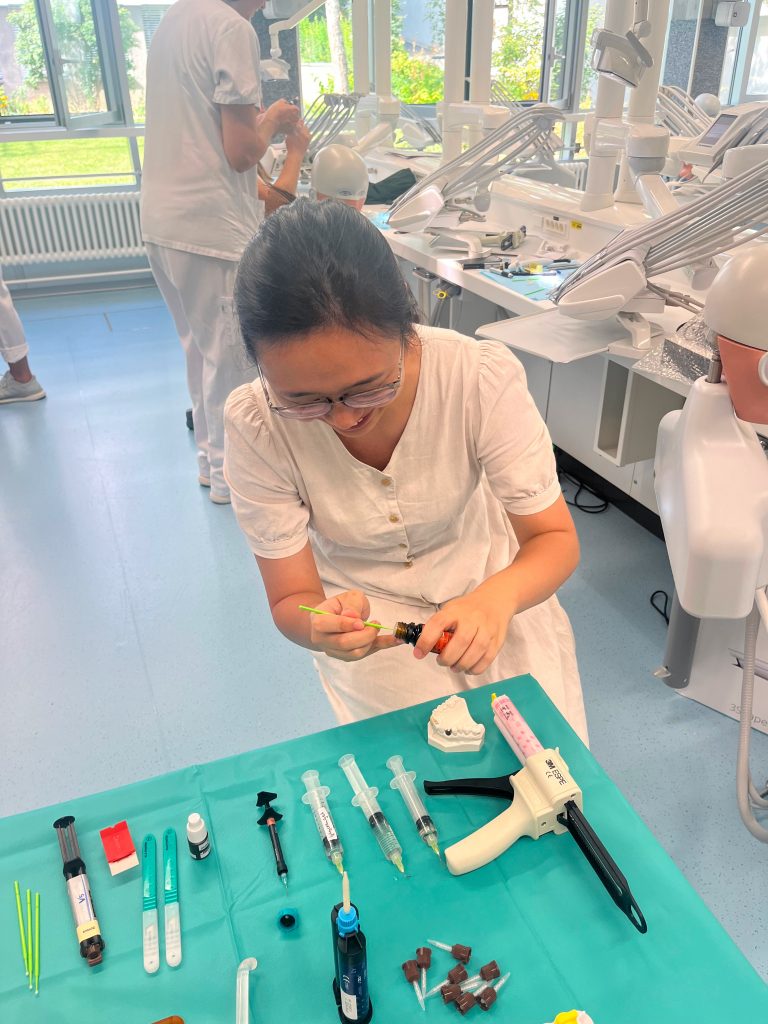
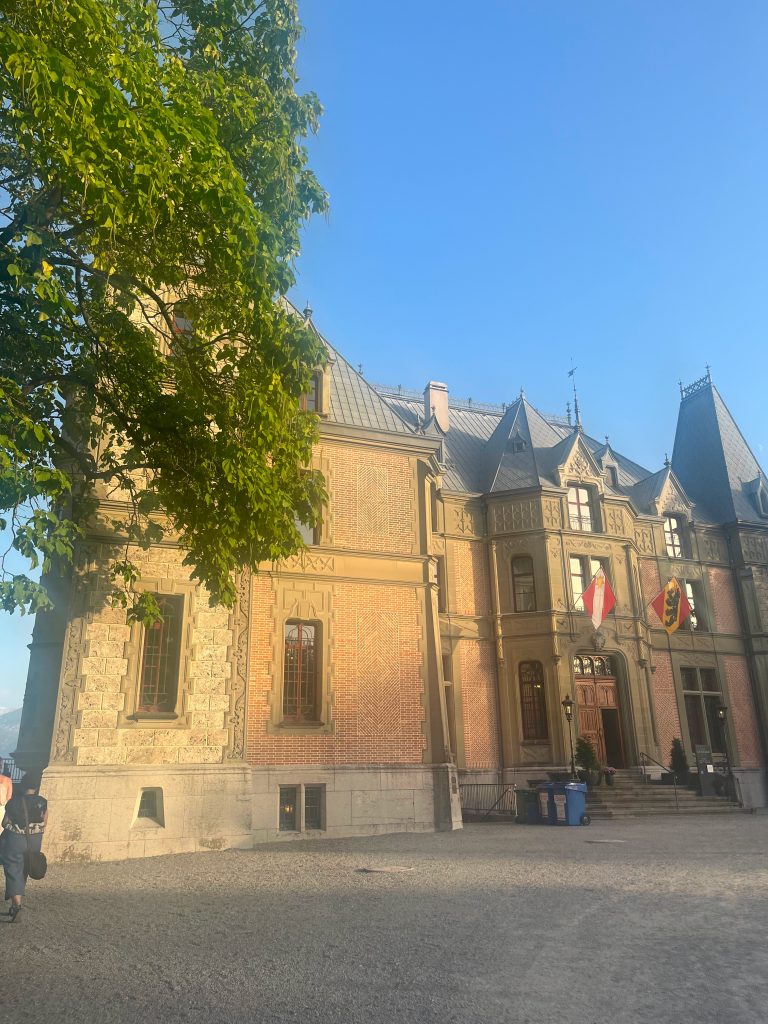
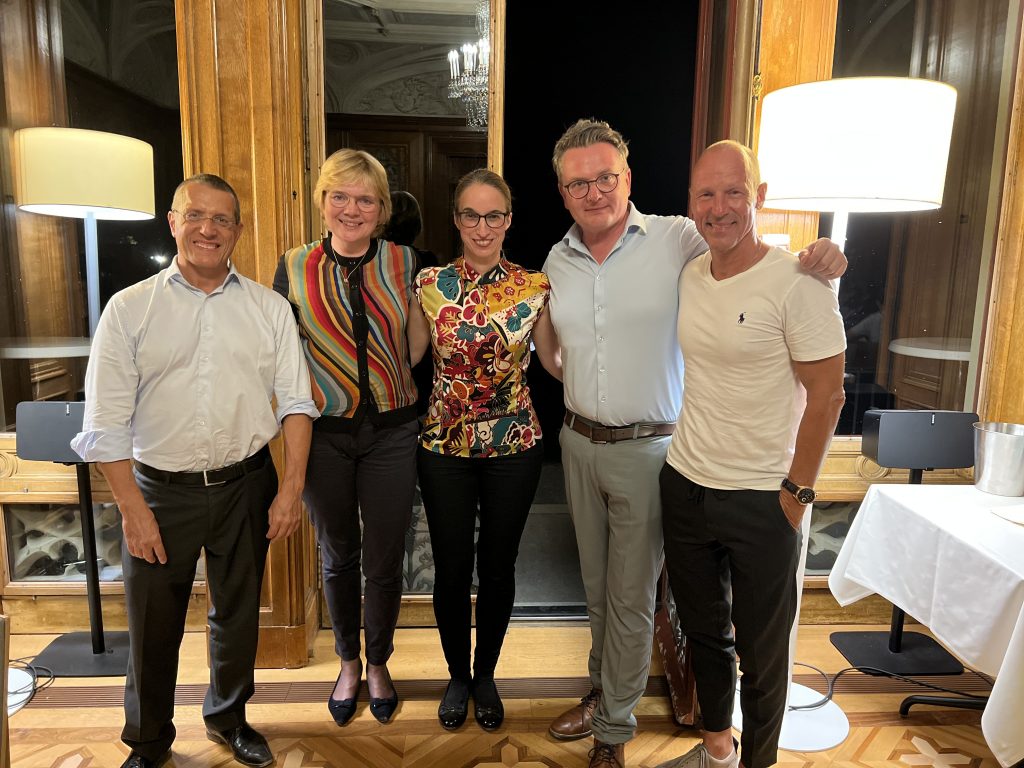
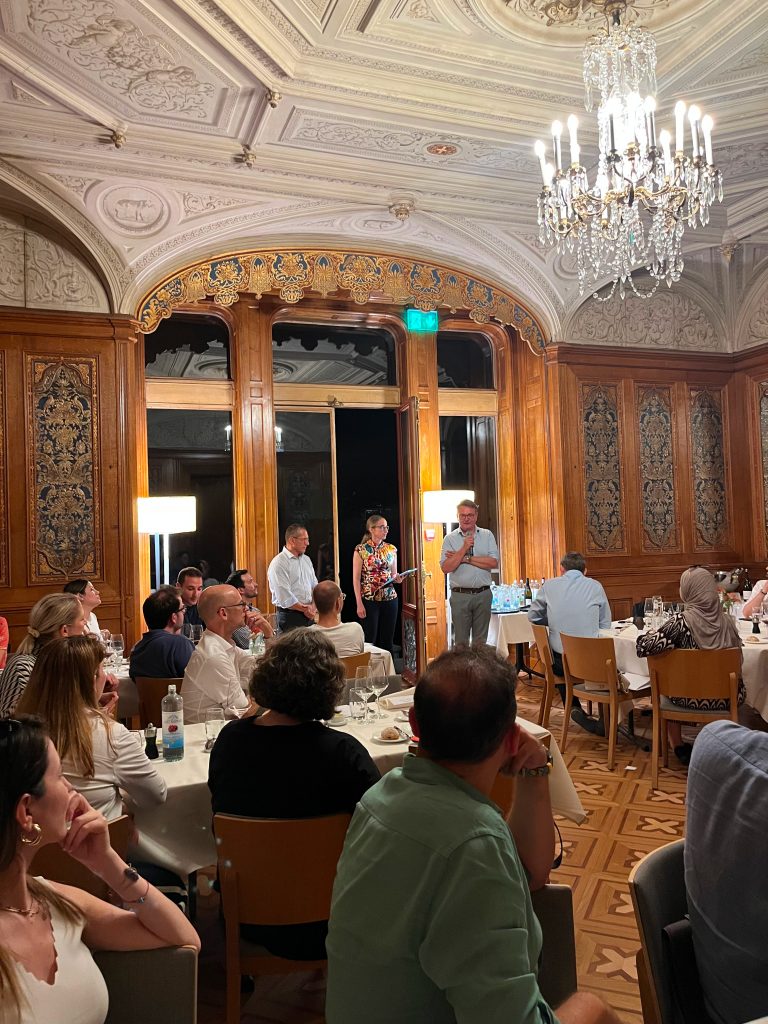
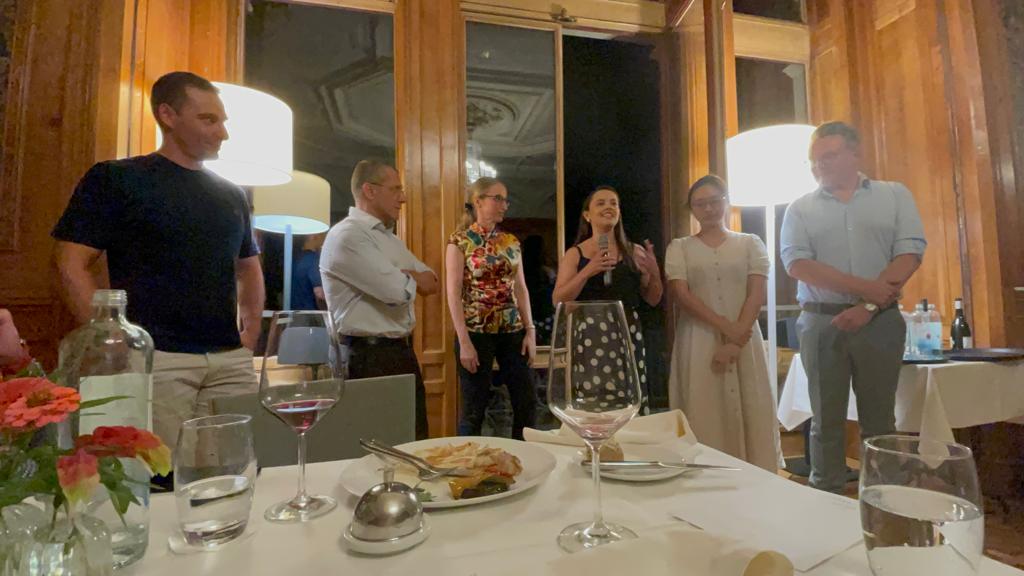
The Perio Department at the University of Bern was in charge of the last day, starting with a lecture by Professor Giovanni Salvi on what occurs in periodontally compromised patients restored with dental implants.
Dr. Andrea Roccuzzo conducted the second presentation on the prevention and treatment of biological complications around implants where he explained how we should correctly diagnose the peri-implant status of these fixtures, the clinical and radiographic parameters that have to be considered over time, and treatment alternatives for peri-implant diseases. He also presented a complex case with a patient diagnosed with generalized stage IV grade C periodontitis.
Later on, Professor Salvi performed the first live surgery of the day. Professor Sculean presented the history of the patient and the severity of the peri-implant lesion in the auditorium. It was clear, the only treatment option that was possible for the patient was explantation.
After a quick coffee break, Professor Sculean led the hands-on about soft tissue management around teeth and Professor Salvi led the section related to the management of peri-implantitis defects.
After our last lunch in our favorite Italian restaurant in Bern, we had the opportunity to learn about the treatment of soft tissue defects around dental implants and in which situations bilaminar techniques via a tunneling approach can be indicated from Professor Sculean. He gave a really interesting lecture about the use of lasers and antibiotics in the treatment of peri-implant infections. PD Dr. Stähli gave us an outstanding overview of the principles of laser therapy, the biology behind its use, and its effectiveness in the treatment of peri-implant diseases.
Last lecture of this amazing ITI Education Week! We had an amazing update on biomaterials for the treatment of peri-implant infections by Dr. Imber. A summary of bone replacement grafts, barrier membranes, bioactive agents, or the combinations of them was well explained by Dr. Imber. It was excellent to learn how these biomaterials can be used in reconstructive therapies.
Right after this presentation, we had our well-deserved coffee break, and once our energy levels were high, we all were ready for the last live surgery! Professor Sculean performed an excellent soft tissue augmentation procedure with the aim of increasing the amount of keratinized mucosa around two dental implants in the posterior maxilla. Nice work and what a privilege to watch the last live surgery of this amazing ITI week.
After our live surgery, it was time to switch groups. Group A had the opportunity to learn and do the hands-on with Professor Sculean and Group B with Professor Salvi!
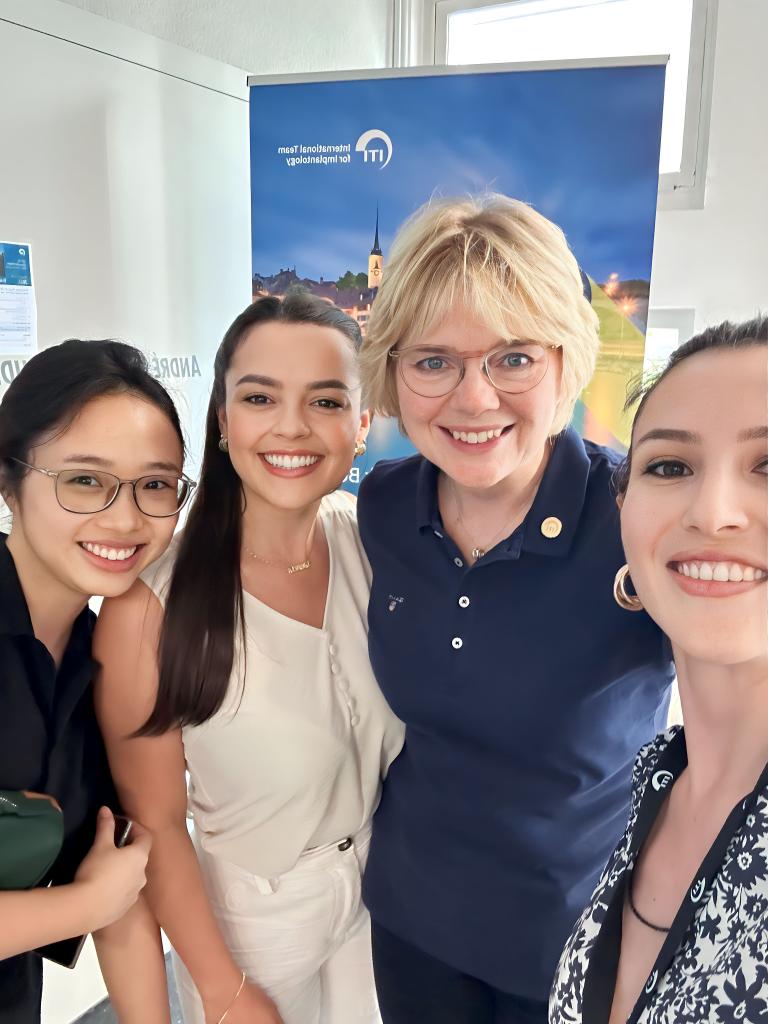
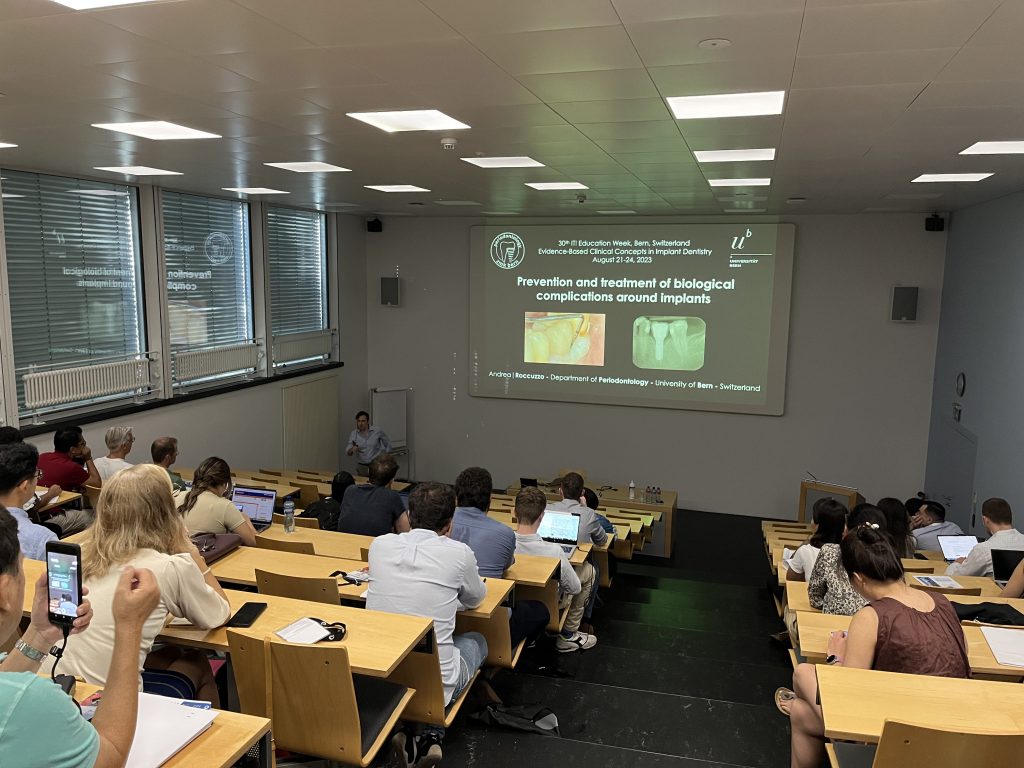
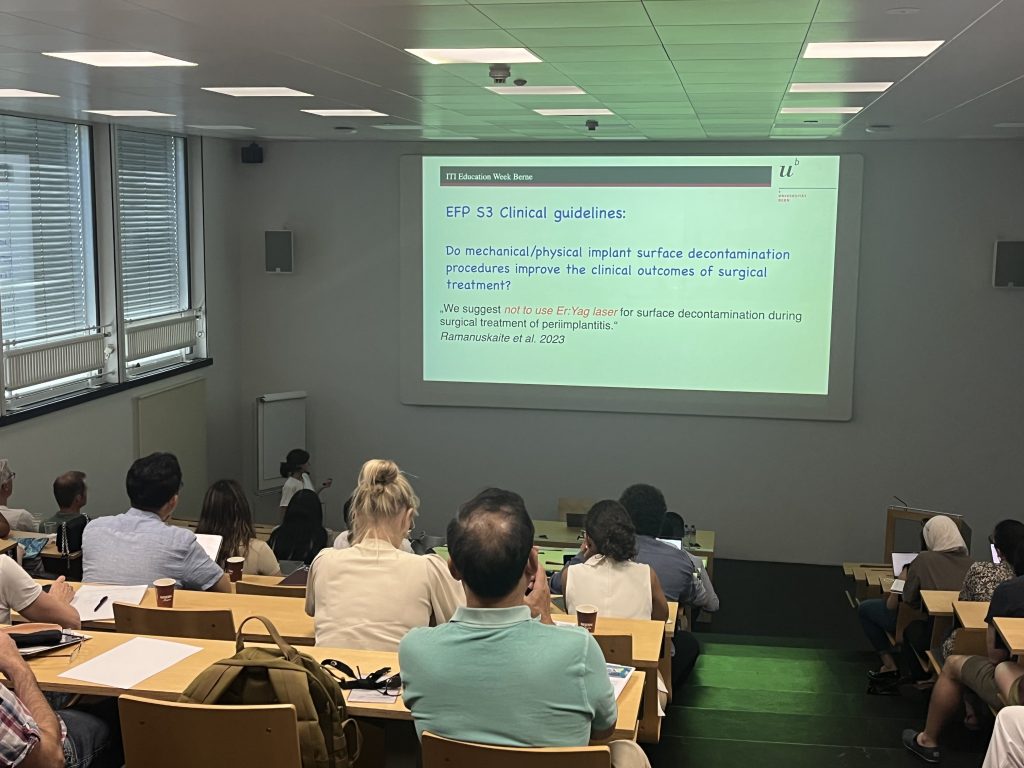
As a summary of the day and the week: what an excellent day for learning from the Perio Department here at the University of Bern, and what a great week learning from the Department of Oral Surgery, Prosthodontics, and Periodontics at the University of Bern! It was also a real pleasure to meet new and old colleagues and have inspiring conversations! The 30th ITI Education Week was really fantastic, so much work went into this week, it was so well-organized, and what a great opportunity to learn from the departments led by Professors Vivianne Chappuis, Martin Schimmel, and Anton Sculean.
Finally, I think it is worth thanking the ITI for this great opportunity, all the people involved in the organization of this event, from ITI Scholars, residents, faculty members of different departments, assistants, secretaries, sponsors, attendances, cameramen, IT, among others.
Without any doubt a week that should be repeated!
Would you like to attend upcoming ITI Education Week Bern “Synergy in Implant Dentistry – the Bernese Interdisciplinary Approach“?
This course presents evidence-based treatment concepts for the rehabilitation of fully and partially edentulous patients. Besides lectures, the participants will see several live surgeries observing how dental implants are placed, bone augmentation performed and biologic complications or soft tissue defects are treated. In addition, the course offers the opportunity of workshops in treatment planning, digital workflows, surgical periodontal and prosthetic treatment concepts.
You can now register here.


